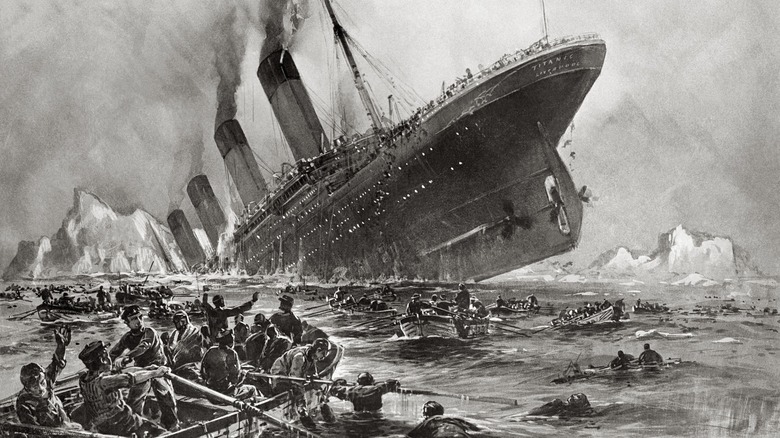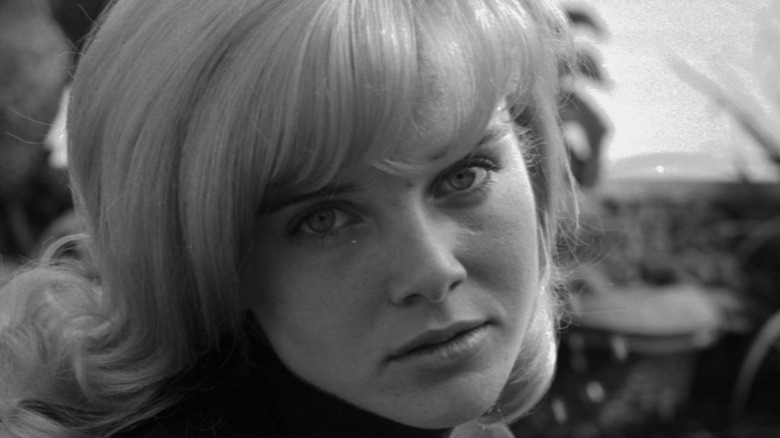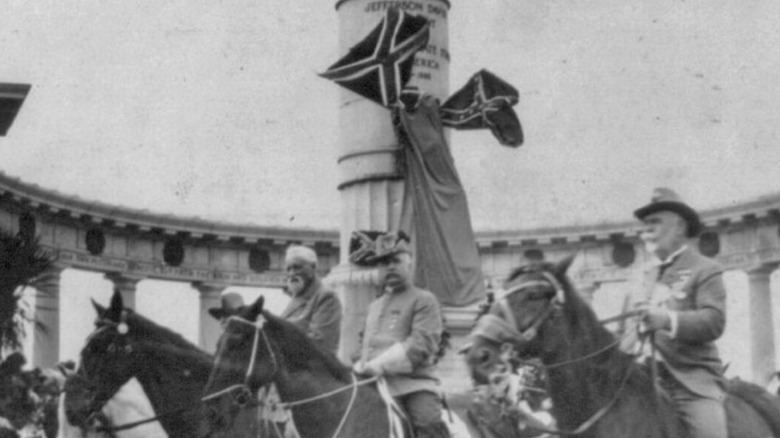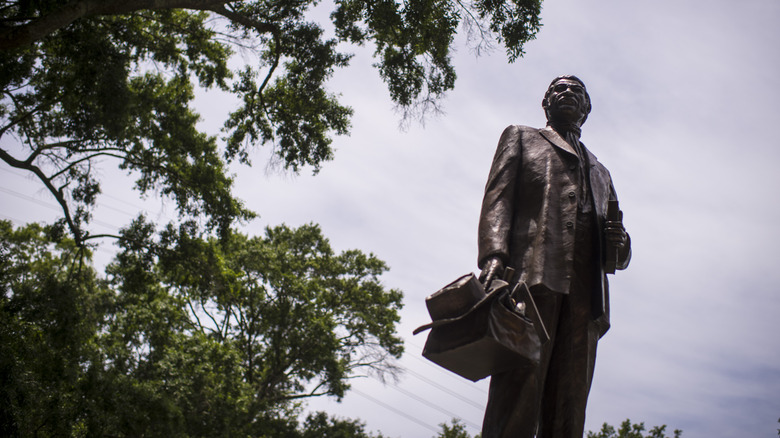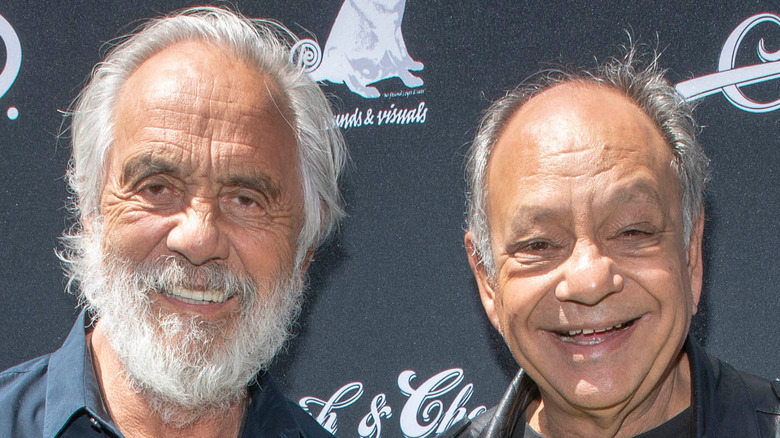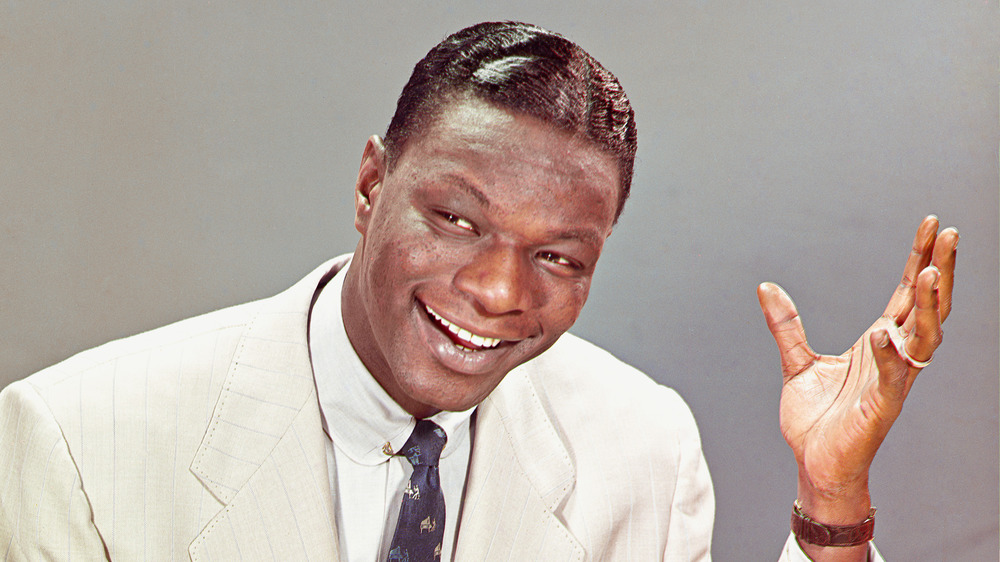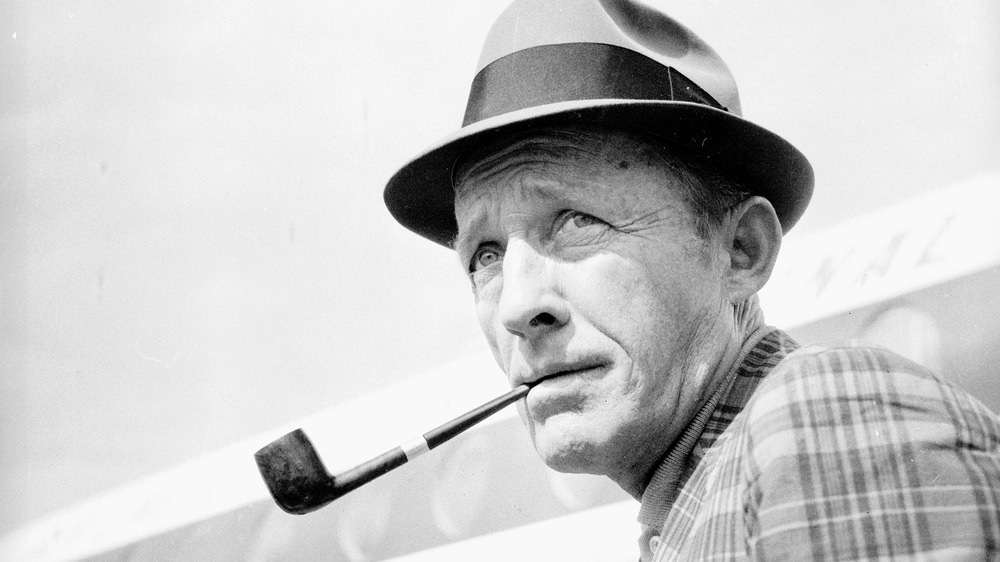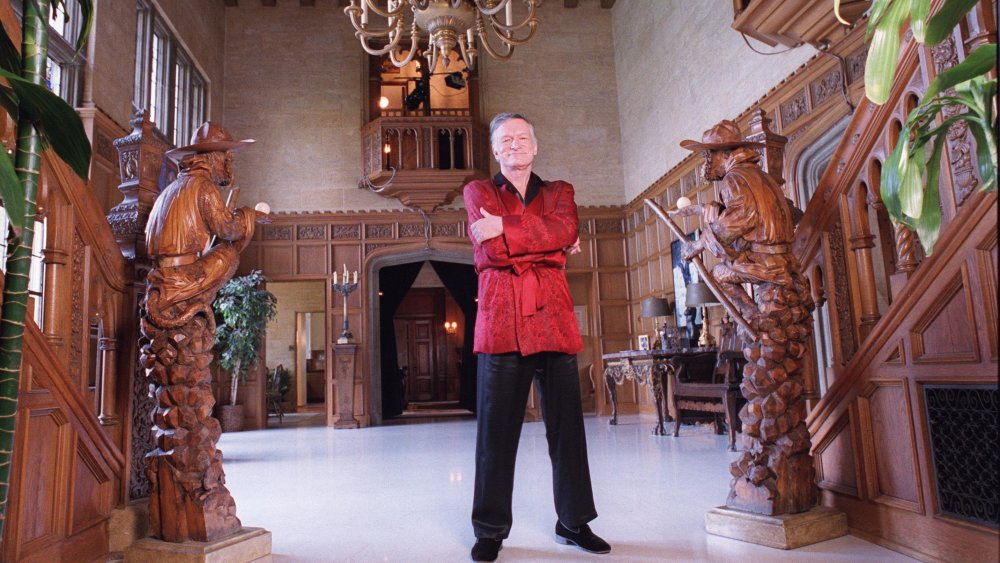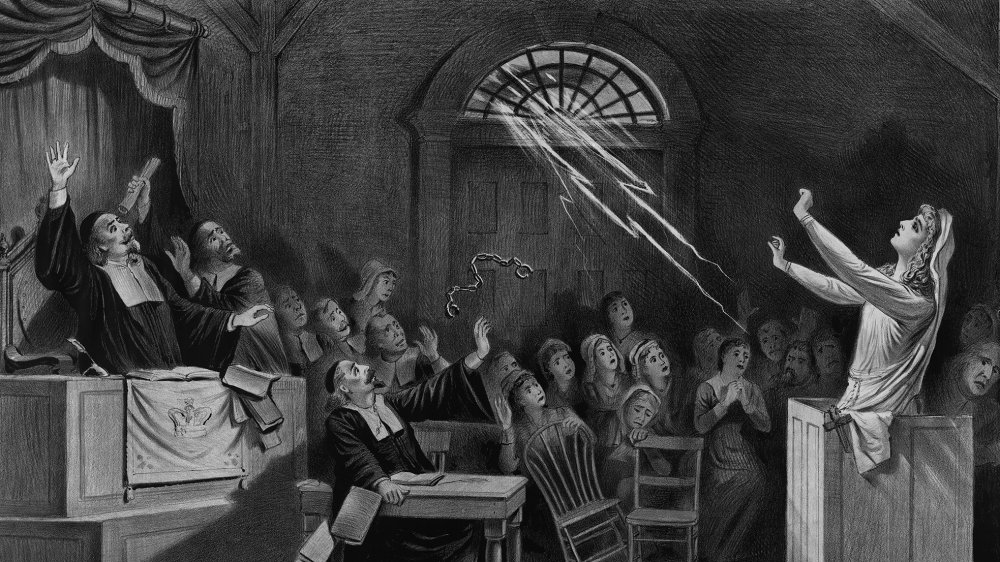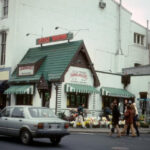
Classic Food Restaurants That No Longer Exist
Rember family trips to Isaly’s ice cream parlor or burger date at Sandy’s? Eating out as kids at these family restaurants gave us some the most cherished moment of our lives. While many of these beloved places have since closed down, the memories are still strong. If you’ve had enough of the trendy restaurants that pop up on every corner and in need of a ride down nostalgia lane, you will definitely enjoy looking at look at more of these classic restaurants that made our childhoods what they were.

A lot of businesses may come and go – in fact, they’re endlessly sprouting up everywhere – but it is the memories attached to them that keep us coming back for more. Do you have a favorite restaurant? Want to find out what happened to all the good ones? Read on, for a delicious, time-travelling adventure into the past.
Beefsteak Charlie’s
Beefsteak Charlie’s opened its doors in Manhattan in the year 1910. The restaurant slowly started rising to fame because they were known to take care of their customers by spoiling them with all-you-can-eat salad and shrimp.

Then, of course, there were the alcoholic accompaniments like sangria, beer, and wine.
Beefsteak Charlie’s
If you think this sounds too good to be true, you’re right. Beefsteak Charlie’s took care of their customers a little too much and this became the reason they couldn’t earn a decent profit. The generous establishment tried to live up to their slogan of “you’re going to get spoiled,” but unfortunately, they couldn’t keep up with their losses.

Eventually, the chain had to put all that “spoiling” to a halt and close its doors for the last time in 2010.
Howard Johnson’s
Howard Johnson’s – better known as “Hojo’s” – was one of the largest restaurant chains during the 1960s and 1970s.
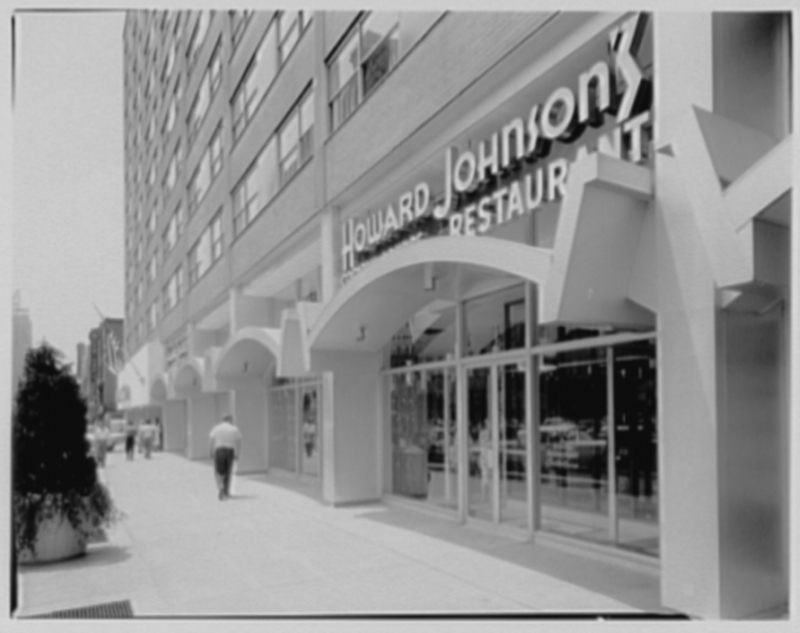
The restaurant chain was known for its iconic building designs, orange roofs, weather vanes, and peaks. With over 1,000 locations nationwide, they soon became a regular favorite with a unique twist when it came to the dining experience.
Howard Johnson’s
After a few years in business, the chain started to fall behind its competitors and didn’t leave much room for financial growth and innovation.
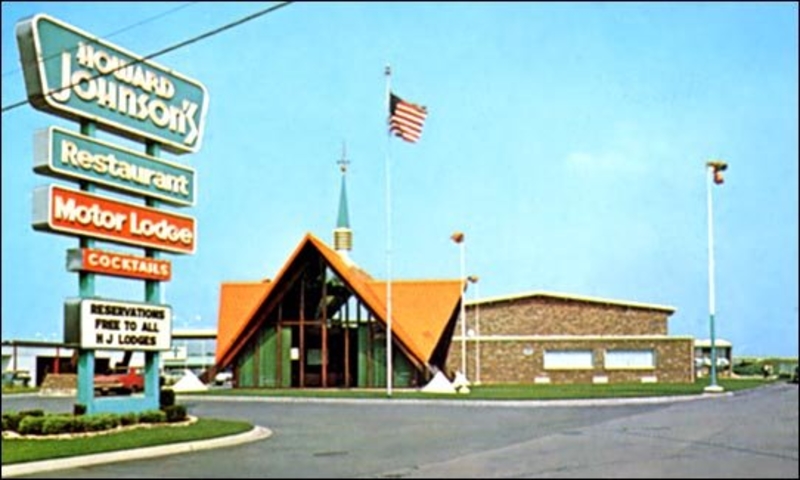
“The downfall of Howard Johnson’s was ultimately their competitors. Friendly’s had their ice cream, KFC was all about fried chicken, and in comparison, HoJo’s was just too basic.” According to one critic.
Official All Star Café
The Official All Star Cafe was founded in 1995 and owned by Planet Hollywood.

While in its prime, the café grew to a total of 10 locations, which included high-traffic areas like Times Square and Walt Disney World.
Official All Star Café
Since it was becoming such a big hit, Planet Hollywood decided to get a number of sports icons to invest in the café. Some of the athletic investors included Andre Agassi, Ken Griffey Jr., Shaq, Wayne Gretzky and Joe Montana, all of whom were quite popular during that era.

Much like the concept of The Hard Rock Cafe chain, Planet Hollywood’s goal was to come up with a safe haven for sport enthusiasts with a theme to match. Unfortunately, the concept did not last too long. Its popularity started to die down, so the company decided to close all of their chains in 2007.
VIP’s
VIP’s was a fast food chain based in Oregon. Starting 1968, it became popular for being one of the largest restaurant chains to be considered both a coffee shop and a diner.

VIP’s had more than 53 locations nationwide, with people flocking in from different places to test the new chain out.
VIP’s
VIP’s tried to replicate the concept dining experience of Denny’s, where they serve breakfast meals at any time, day or night. Since most of their locations could be found along the freeway, they became the most accessible dining destination for travelers.
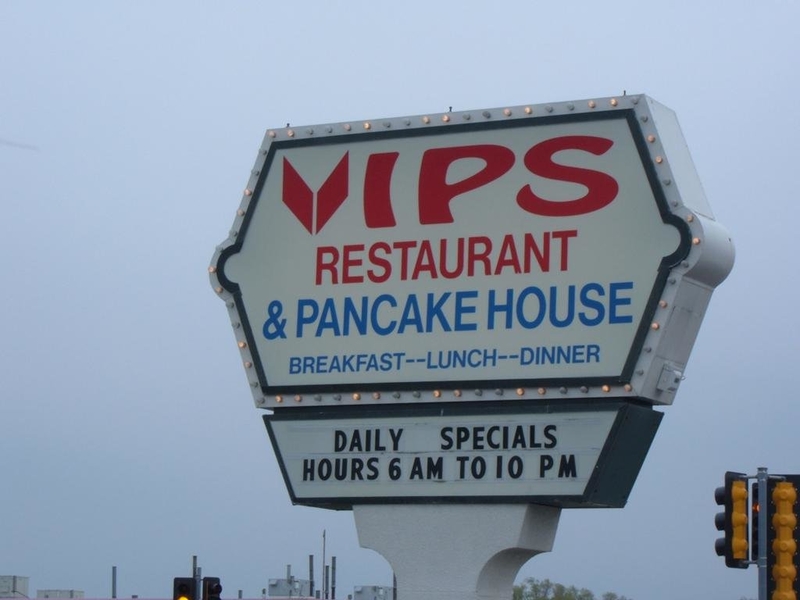
Unfortunately, the diner started going down in the early 1980s and sold 35 of their locations to Denny’s.
Horn & Hardart
Although this seemed like the easiest way to get food on the go, without having to line up behind a check-out counter.
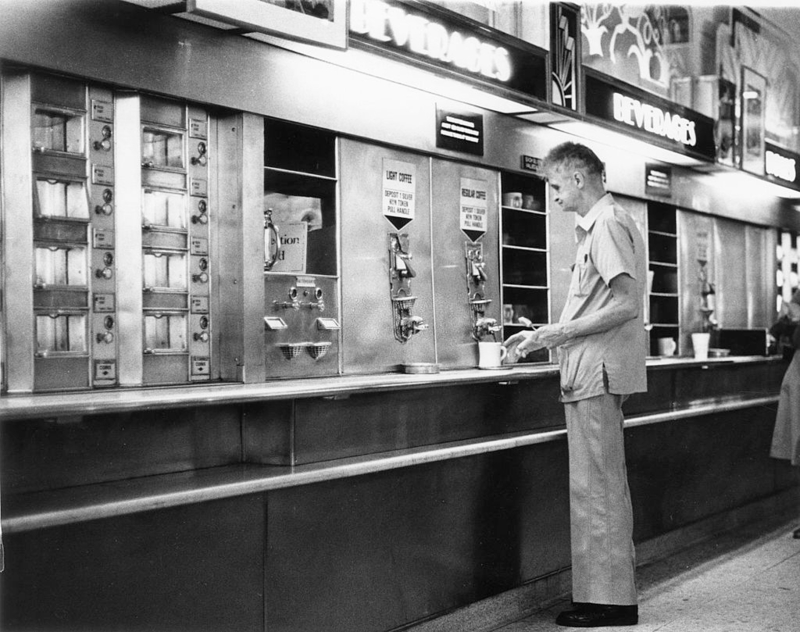
Sadly the last Horn & Hardart location closed in 1991.
Burger Chef
Burger Chef was founded in 1954 by General Electric in Indianapolis. The chain had over 1,200 locations nationwide during its prime, and quickly became popular.
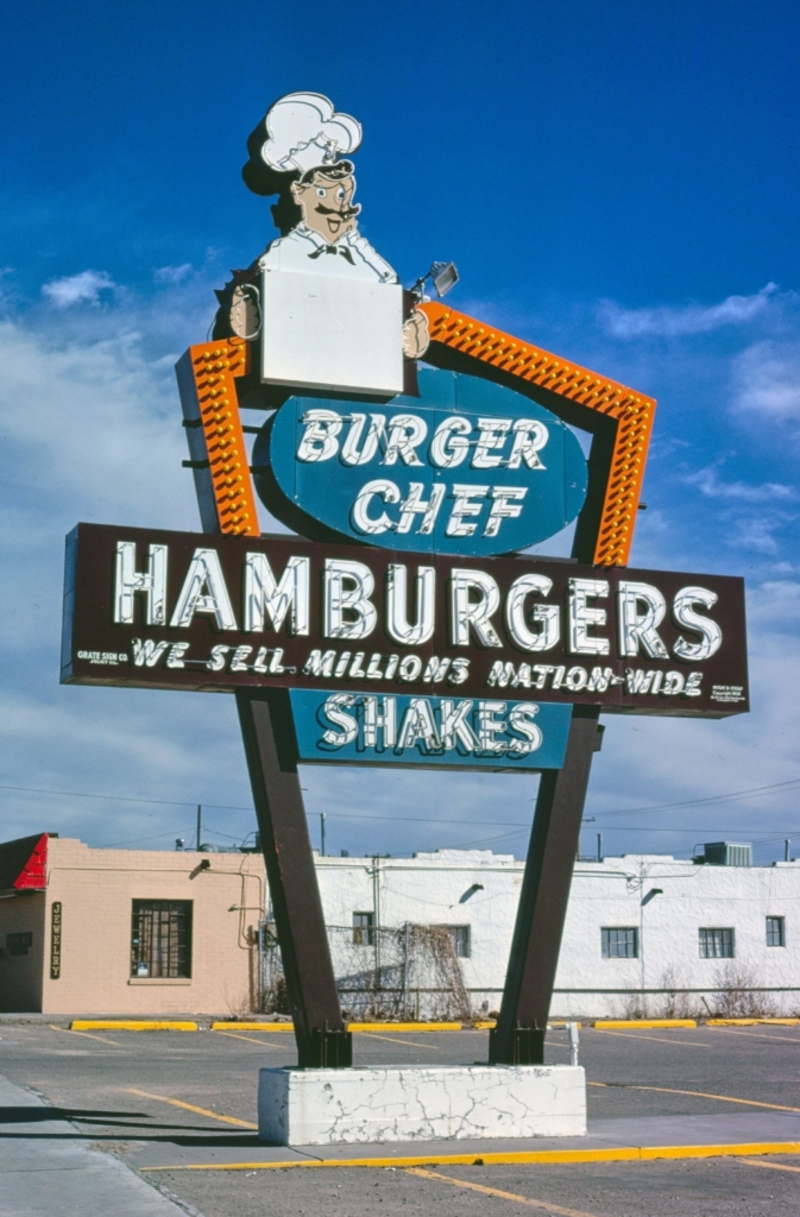
With all this success, you might be wondering just what happened to it? Perhaps if we tell you its biggest competitor was McDonald’s, you might be able to guess how it went down.
Burger Chef
Even though Burger Chief was wildly popular, it started declining in quality and eventually lost to its golden-arched competitor.
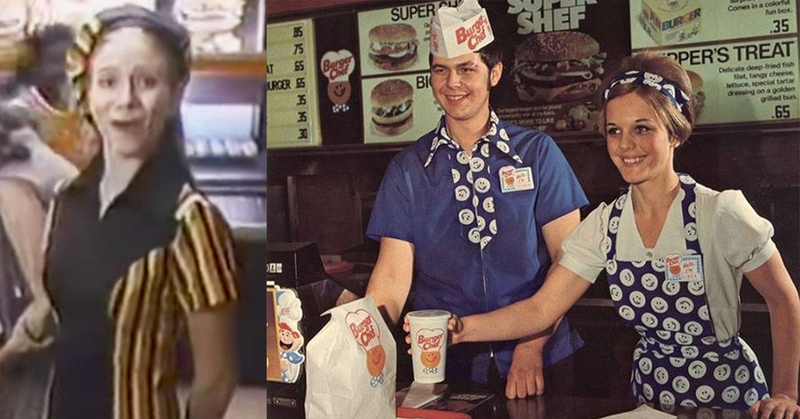
After haemorrhaging money, it was sold off to General Foods and then sold off again. After all the changes, it was reborn as Hardee’s.
Isaly’s
Isaly’s was founded back in the 19th century and is still known today as one of the best restaurants/diners in the States.

Not only was it known for its chipped chopped ham, it also became famous for inventing the Klondike Bar.
Isaly’s
The restaurant is named after the founder, but in advertisements, the word “Isaly’s” was said to stand for “I shall always love you sweetheart.”

The company was sold off several times over the years until, along with the good old days, it slowly started losing its fire… Still, Isaly’s remains a milestone in America’s history.
Lum’s
Lum’s first launched in 1956 in Miami Beach as a normal hot dog stand, and then it slowly turned into something big.

They originally had four locations in 1961 and were best known for their beer-steamed hot dogs. After their success as a hot dog stand, the owner decided to expand the business.
Lum’s
Lum’s quickly grew in popularity and had over 400 company-owned franchise restaurants by the year 1969, which included locations in Hawaii, Puerto Rico and Europe. Because of their quick expansion, they eventually overdid it and, unable to sustain their reach, ended up filing for bankruptcy.
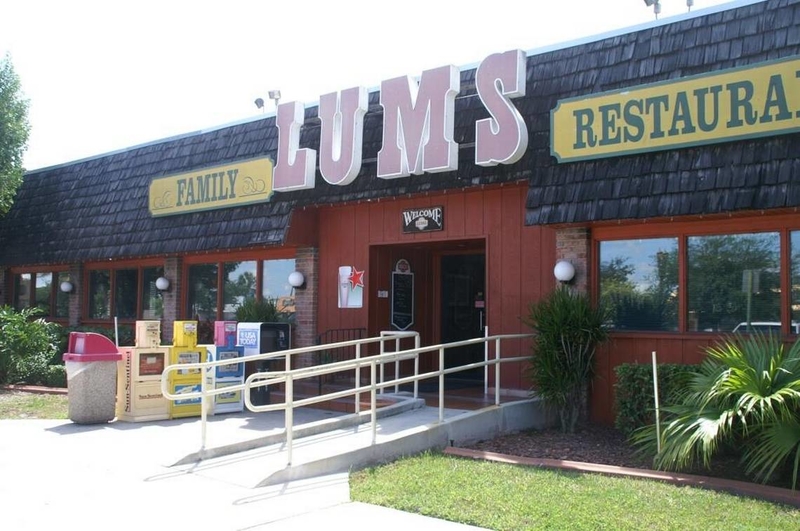
All the original stores were closed by 1982.
Steak and Ale
Steak and Ale was first founded in 1966 in Dallas, Texas. The restaurant offered diners a new kind of vibe.

It was branded as cheap and affordable and became very popular because the steak was always to die for!
Steak and Ale
However, in their attempt to keep up with their competition, they started lowering their prices and offering free meals. In the end, their plan failed and the last location was closed in 2008.

Because it’s still in demand, in early 2017 the parent company started offering franchises, so Steak and Ale fans will be happy to know it’s on the way to being fully revived really soon.
White Tower
White Castle was founded in 1921, then in 1922 came its imitator: White Tower. So what is the difference between the two? Not a whole lot, unfortunately!

Sadly, it wasn’t just the concept of their fast food chain that was taken from White Castle.
White Tower
White Tower took just about everything from the original except, maybe, their kitchen sink. White Tower went after the advertising methods, the style, and even the architecture of the building, making their fast food chain into something resembling a photocopy of the original.
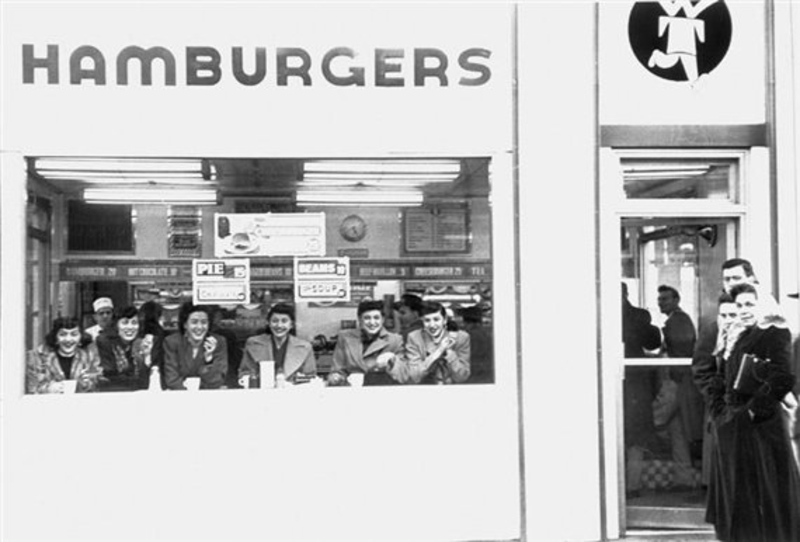
There were 230 locations in the 1950s, but many closed because of the legal action against them. What a surprise, huh? The last location closed down in 2004.
Schrafft’s
There were at least 43 locations on the East Coast by 1937, mostly in New York City, but they also had some chains in Philadelphia and Boston.

The company started going down by the 1980s. With all the competitors they were up against at the time, they sadly did not stand a chance, and decided to close.
Red Barn
As the name indicates, Red Barn is known for, well… its red barns. The exterior walls were painted red to give the impression of a barn.
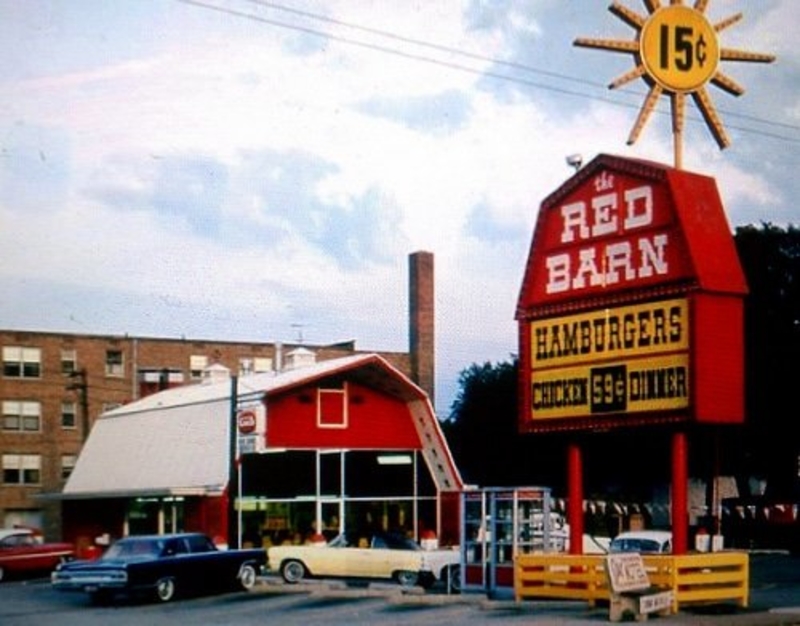
Since customers could never mistake the Red Barn for any other restaurant, it became quite popular.
Red Barn
It had over 400 locations in the US and abroad during its prime. To date, there’s only one more location left in Wisconsin, Racine, and its name was changed from the Red Barn to just The Farm.
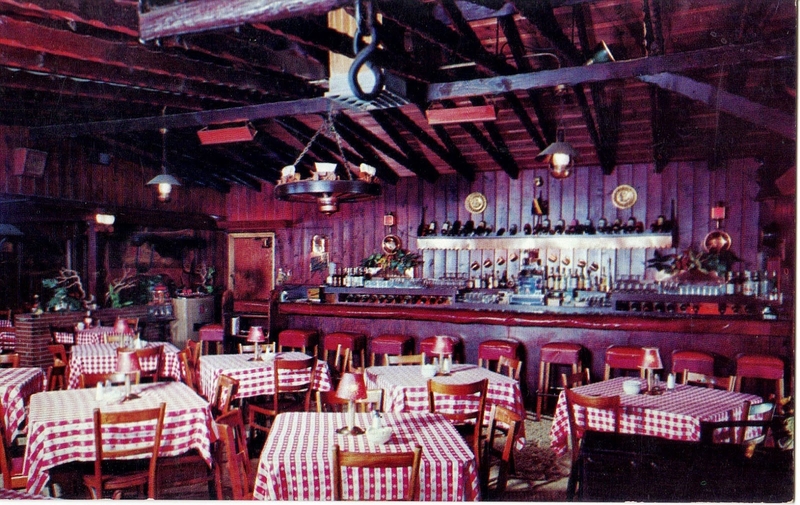
The Red Barn experience was undeniably refreshing, which is how it gained so much popularity. People wanted to keep coming back, not just for the food, but for the unique dining experience.
Minnie Pearl’s Chicken
One of Minnie Pearl’s biggest competitors was none other than KFC. In fact, Minnie Pearl’s Chicken was one of the only fast food chains built to compete with KFC.

It was co-founded by entrepreneur John Jay Hooker and the famous country singer, Minnie Pearl, which is how they came up with the name.
Minnie Pearl’s Chicken
Minnie Pearl’s was such a huge success, that at one point, there were over 500 restaurants around the country. Sadly, because of the lack of foresight in cohesive menus and recipes, the entire venture started crashing down.

The restaurant also started losing to its Kentucky Fried competitor, so they decided to close it.
Gino’s Hamburgers
Gino’s Hamburgers was opened by football hall-of-famer Gino Marchetti, in 1957.

The chain started growing in popularity by the 1960s, and it became a culinary mainstay, with its slogan “Everybody goes to Gino’s.”
Gino’s Hamburgers
Not long after this initial surge in popularity, Gino’s had another growth spurt, expanding to over 300 locations, mostly on the East Coast. Gino’s also opened locations in the Midwest, but unfortunately, everything was short-lived.
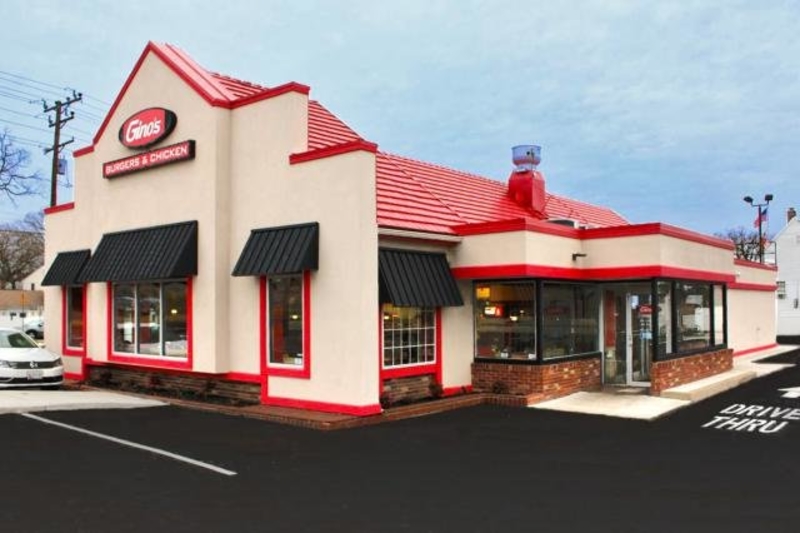
Eventually, the burger joint was sold to Marriott, which then converted all Gino’s locations into Roy Rogers restaurants.
Sambo’s
Sambo’s was founded in 1957, and experienced healthy growth on the West Coast. There were over 1,100 locations open by the late 1970s.

The name started to spread to the northeast, where it became quite popular. Although it was famous for the food, most people know Sambo’s for the controversy surrounding its name.
Sambo’s
As you may not have known, the name “Sambo” is a derogatory term. While the company claimed the name was a derivative of the owner’s names combined, it made people uncomfortable and therefore caused everyone to stop dining at the restaurant.
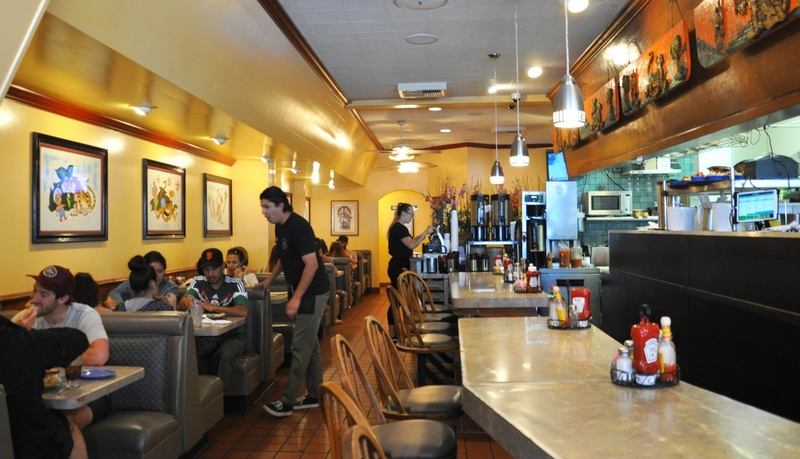
The business went bankrupt and attempted to rebrand themselves multiple times before eventually giving up and shutting down completely. The very last Sambo’s is in Santa Barbara, California.
D’Lites
D’Lites was founded in 1978 and, within less than a decade, the fast food chain had soon expanded to over 100 locations nationwide.

Unfortunately, their success was very short-lived due to their inability to offer people healthier food options.
D’Lites
Most of their competitors, such as McDonald’s, Burger King and Wendy’s, started creating healthier food choices, which left D’Lites lagging.
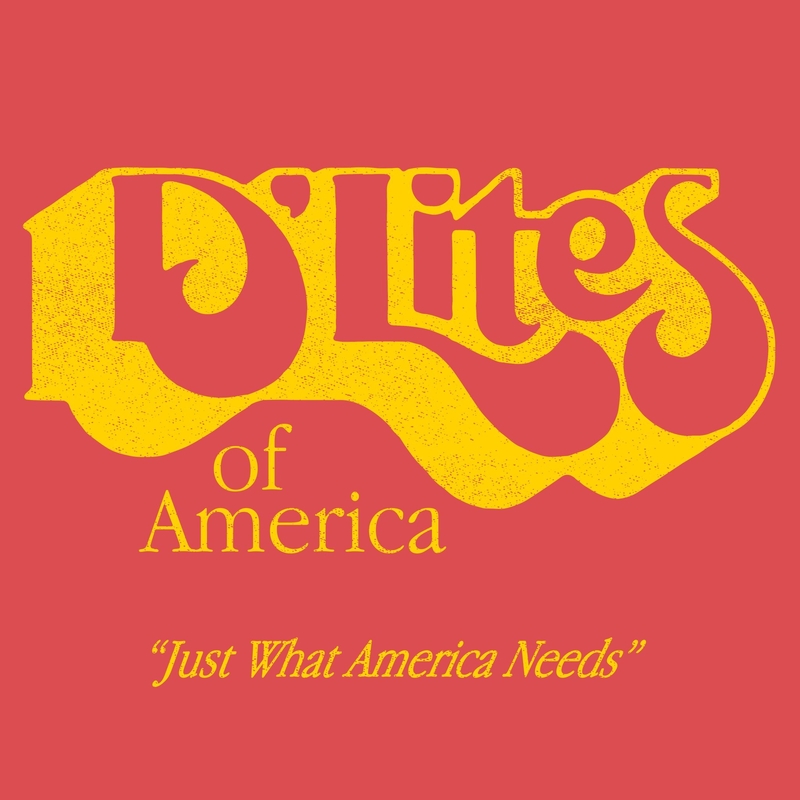
Although they were miles ahead of the pack as far as non-healthy fast food was concerned, it seems they lacked the foresight to expand their menu to suit the blossoming healthy eating trends. Eventually, the company could no longer keep up with their competition, so one by one, they closed all of their store locations.
Henry’s Hamburgers
Henry’s Hamburgers was opened by an ice cream company to expand on their shakes and malts. Back then, people went crazy for chocolate shakes and burgers, so it’s no wonder this place became famous.

Henry’s was designed to go after their strongest competitor: McDonald’s. Compared to McDonald’s, they didn’t have a drive-in, and had a much less diverse menu.
Sandy’s
Sandy’s first opened its doors in Central Illinois in 1956, established by four businessmen named Gus “Brick” Lundberg, Robert C. Wenger, Paul White and W. K. Davidson. In the Midwest, Sandy’s was the ancestor of the Hardee’s chain.

Originally, the four owners wanted to open McDonald’s franchises, but because the area they were going for was too high in traffic (which resulted in higher fees to pay), they decided not to pursue the idea further.
Sandy’s
Instead, they ended up opening a new chain of burger joints, which they made to imitate their competition.
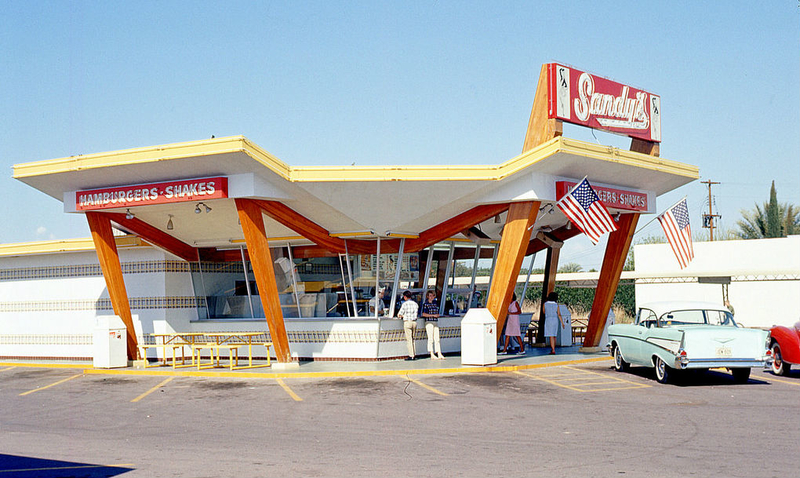
Sandy’s lasted for a good 20 years before McDonald’s eventually took over and Sandy’s shut down.
Wimpy
The Wimpy brand was established by Edward Gold in 1934, in Bloomington, Indiana. The first shopfront was established in Chicago that same year.

In 1954, Wimpy’s was introduced to the United Kingdom as “Wimpy bar”. The chain quickly expanded into a massive 1,500 locations worldwide.
Wimpy
The name was inspired by Wimpy from the Popeye Cartoon, which was created by E.C. Segar. Sadly, all the Wimpy locations in the United States started going under after the death of the owner.
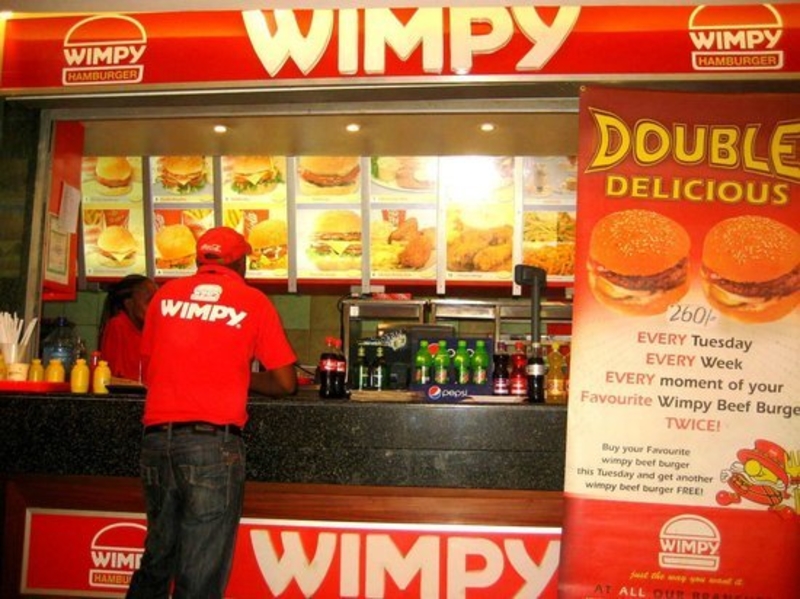
While the rights and trademark were never purchased from the Gold’s after the owners death, there are still some locations open in the UK.
Wetson’s
Reading Wetson’s slogans “Look for the Orange Circles,” and “Buy a bagful,” might make you feel a bit of déjà vu. Especially if we remind you of the very similar, pre-existing slogans of McDonald’s and White Castle respectively.

Overall, Wetson’s was a mixture of all the fast food joints put together.
Wetson’s
Because it was a mixture of everything, it quickly started to gain popularity and the company grew, with over 70 locations at its peak.
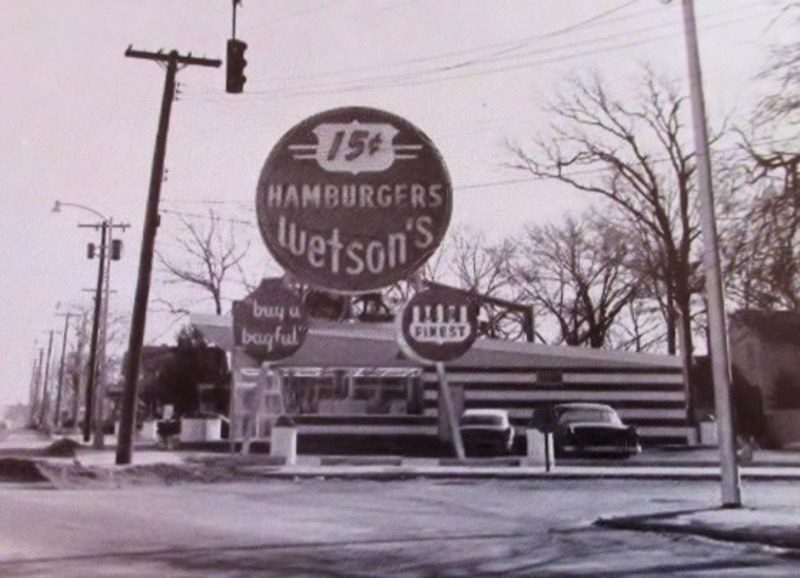
Wetson’s was named after its founder, Herbert Wetanson. In 1975, the mishmash company merged with the hot dog chain, Nathan’s Famous. But the brand was eventually shut down altogether.
Childs
Childs was first established in New York City in 1889, and named after the founder, Samuel Childs. Most of their locations were within the US and Canada. In the 1920s and 1930s, the company’s popularity skyrocketed.
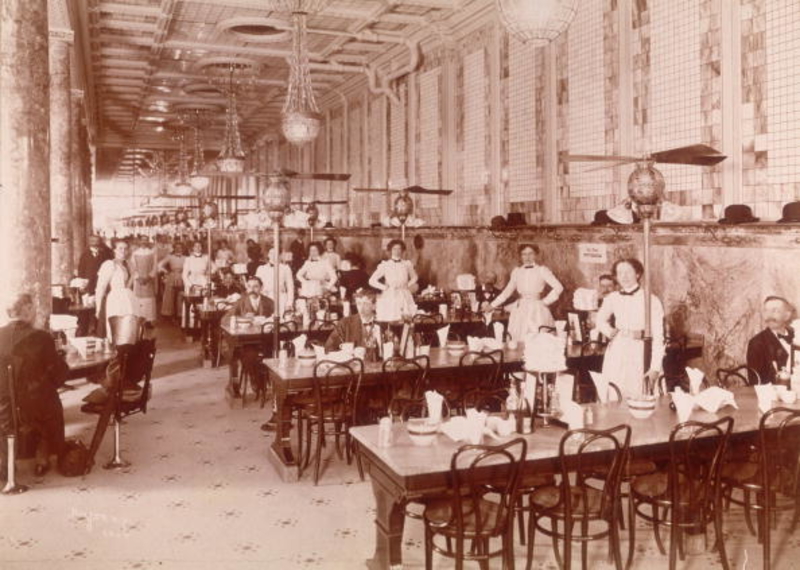
The restaurant had 125 different locations and served over 50 million meals each year. The more notable locations of Childs restaurants had a nautical theme, which helped them rake in the cash.
Childs
The company eventually went bankrupt in the 1940s, but were able to continue operating despite this.
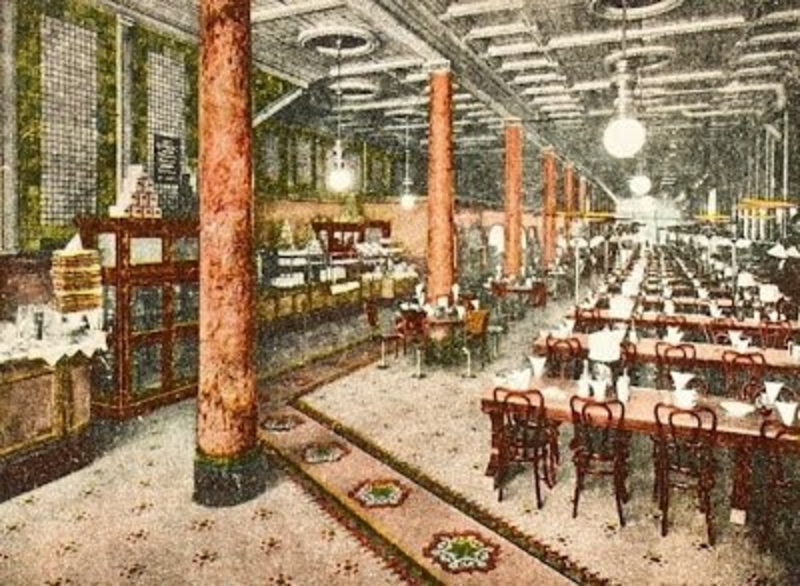
Childs was later turned into the Hotel Corporation of America, before the restaurant was sold off to different companies in the 1960s.
Naugles
Naugles was a Southern California fast food chain of Mexican restaurants, established in 1970. Naugles was founded by former Del Taco partner Nick Naugle.

The first restaurant was in Riverside, California. The chain’s motto was “Prepare food fresh. Serve customer fast. Keep place clean!”
Naugles
After a while, Naugles merged with Del Taco, and changed its name to Del Taco in most of the store locations.
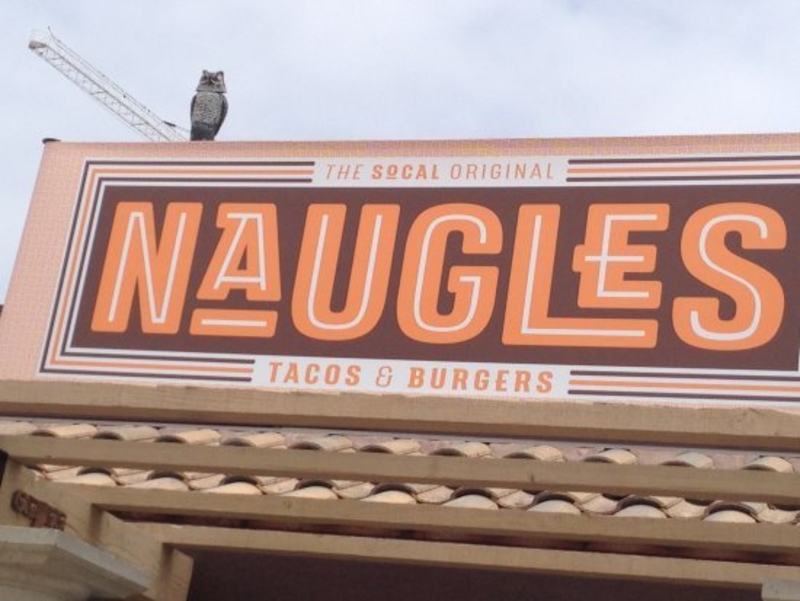
Now, there are only two locations open in the areas of Fountain Valley and Huntington Beach, California. In 2015, a revived Naugles chain was established by Christian Ziebarth, after he discovered that the trademarks had been abandoned by the original successor.
Casa Bonita
Casa Bonita – which in Spanish is translated as “Beautiful House” – was a chain of Mexican themed restaurants that originated in Oklahoma City.

It was founded by Bill Waugh in 1968. Casa Bonita was known to give its customers a great show and serve good food at the same time, known as “eatertainment.”
Casa Bonita
They had locations in Oklahoma City and Tulsa, as well as in Lakewood, Colorado. There is currently only one location left open, in Lakewood, but it started operating under a different name.
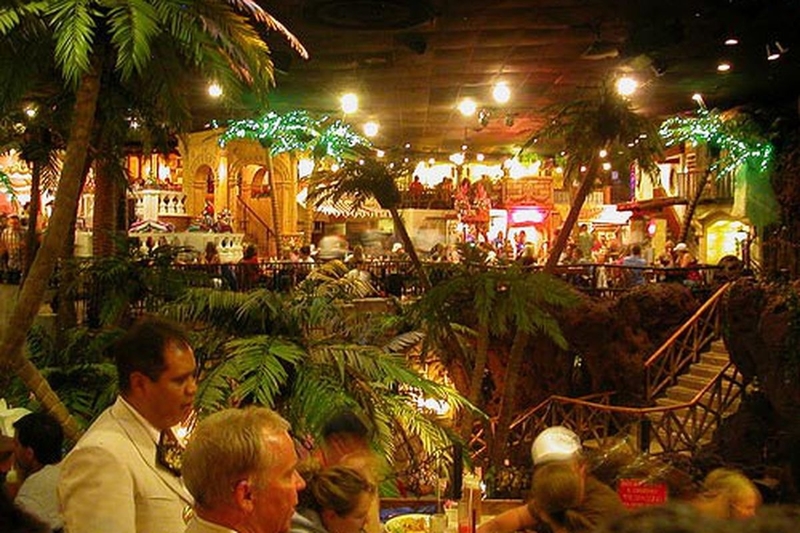
The restaurant enjoyed its 15 minutes of fame after an episode of South Park was titled “Casa Bonita.”
Chi-Chi’s
In 1975, Chi-Chi’s opened its first store, and by March of 1995 already had 210 locations. “A celebration of food” was its first slogan, later changed to “Life always needs a little salsa.”

The company fell on hard times after a Hepatitis A outbreak at one of their establishments. Kind of like a zombie attack, the outbreak of this sickness killed at least four people and the company struggled to recover.
Chi-Chi’s
Their real estate was sold off to Outback Steakhouse, which in turn sold them off to other companies.
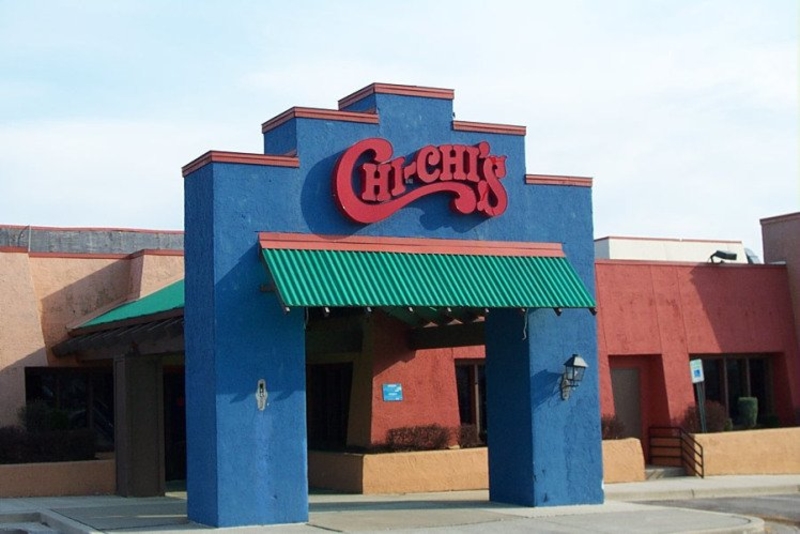
They still have a few locations in some parts of the Middle East, and elsewhere across the globe.
House of Pies
The Original House of Pies was a chain of restaurants that was founded in 1965. This sweet joint offered just about any kind of pie you could imagine.

By 1979, the restaurant chain quickly picked up its popularity. In 1986, however, the franchise started going down and then filed for bankruptcy.
House of Pies
The House of Pies was founded by Al Lapin Jr., who also the International House of Pancakes (IHOP).
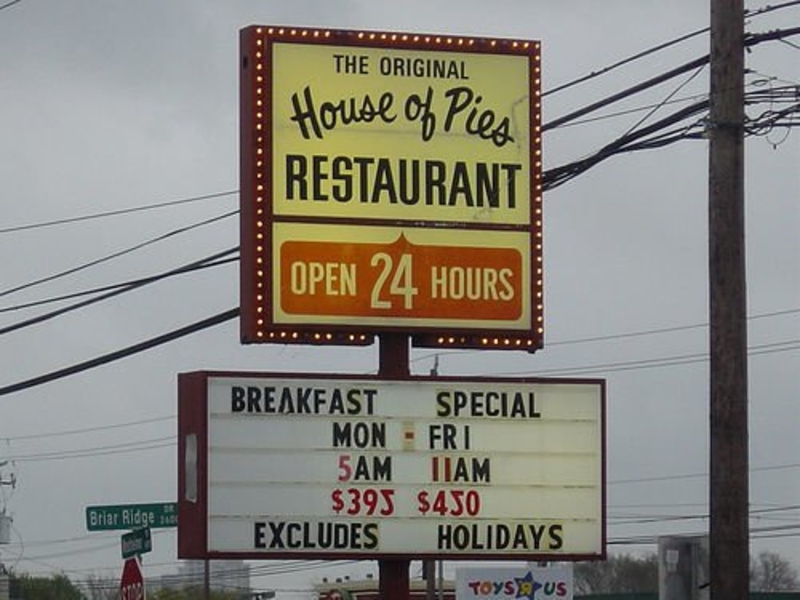
Nowadays, there are only a few of the Original House of Pies still operating, all located throughout Houston and Los Angeles.
Charlie Brown’s Steakhouse
Charlie Brown’s Steakhouse was founded in 1966, in Warren, New Jersey, by three businessmen. The dining restaurant was based in Milburn, New Jersey.

In the 1980s and 1990s, the restaurant started growing rapidly, with locations in New Jersey and New York.
Charlie Brown’s Steakhouse
After this initial boom, the business started going down and closed more than 47 of their locations as part of their reconstruction plan.
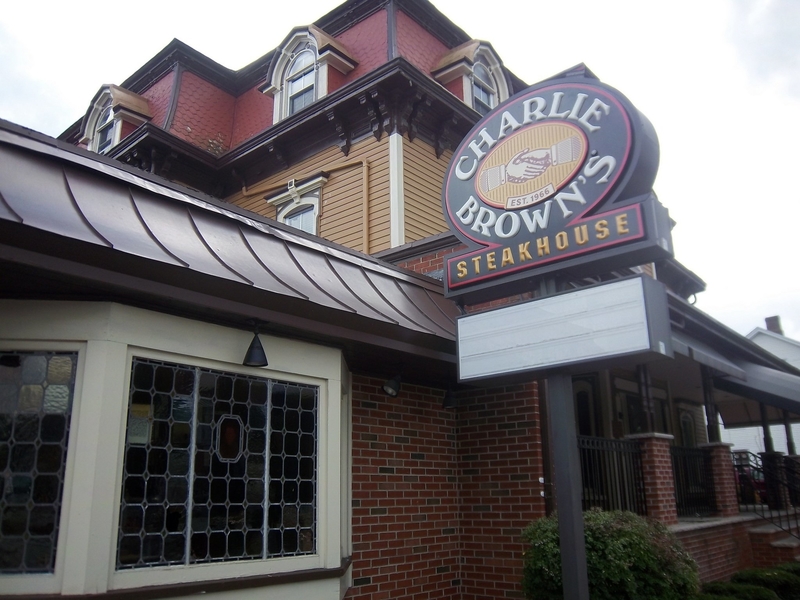
Charlie Brown’s is now owned by another company and there are still a few locations around today, mainly in New Jersey, with a few also in New York state.
Bennigan’s
Founded in 1976, the Irish restaurant Bennigan’s was established in Atlanta, Georgia. The idea for the chain came from Norman Brinker, vice president of Steak and Ale.

Bennigan’s suffered due to a lack of brand loyalty, with numerous other restaurants featuring the same style and menu.
Bennigan’s
Slowly, locations in the US and abroad began to close. Currently, there are only around 23 locations left in the US.
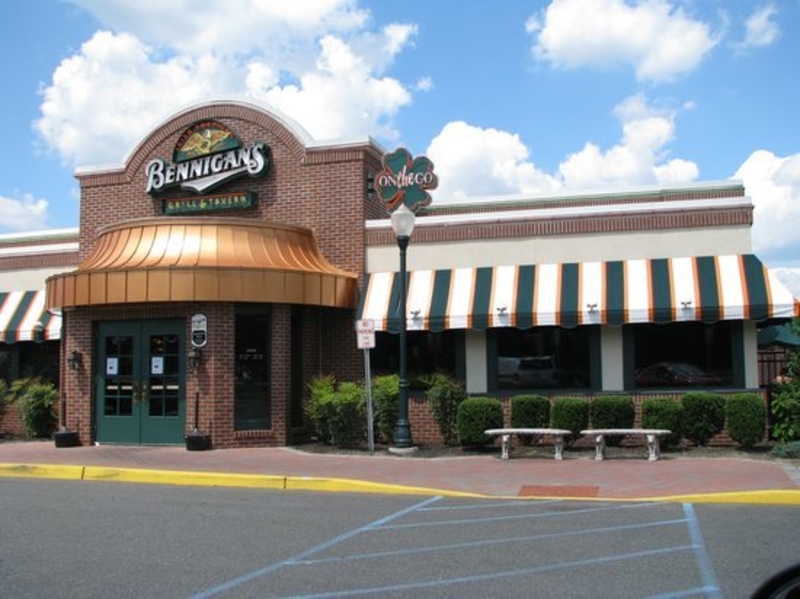
It’s okay though, because after the owner left the company, those who left with him went on to come up with Chili’s, which is a popular restaurant up to this day.
Kenny Rogers Roasters
Kenny Rogers Roasters opened their very first restaurant in 1991, in Coral Springs, Florida. Yes, as you may have thought, it is indeed owned by the country music star, Kenny Rogers.

They had over 350 locations at its peak, and a big part of its initial popularity came from the Seinfeld episode where Kramer develops an obsession with chicken.
Kenny Rogers Roasters
By 2011, all the chains closed in the United States and Canada, but KRR is still doing well in many parts of Asia.
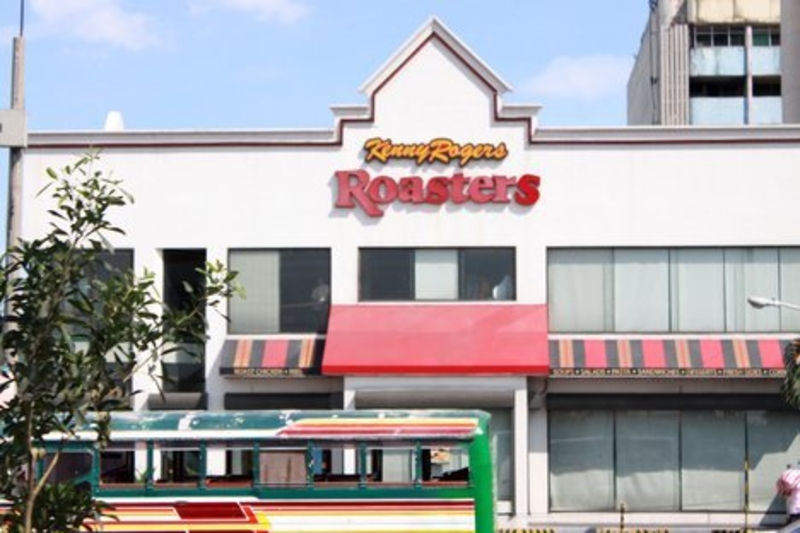
There is still a total of 156 locations open worldwide, but the country music star is no longer involved.
Ponderosa and Bonanza Steakhouses
These sister steak joints became popular because of the hit TV show Bonanza. They were known as homestyle dining restaurants, and were initially based in Plano, Texas.

Their menus mainly consisted of food selections like seafood, chicken entrees and steaks with side buffets, for a reasonable price.
Ponderosa and Bonanza Steakhouses
During their prime, there were over 600 different locations of Ponderosa and Bonanza Steakhouses, nationwide. However, because the businesses weren’t doing so well and after a while the owner decided to sell.
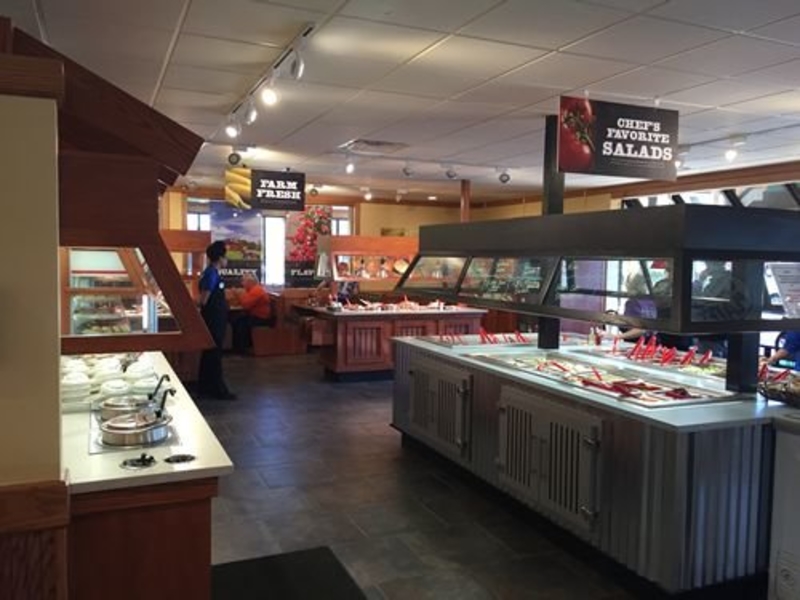
Now, the two chains are owned by the same company but have downsized to only 20 locations.
Bob’s Big Boy
With its memorable statues, Bob’s Big Boy was known as one of America’s iconic symbols of the 20th century. It was founded by Bob Wian in Southern California in 1936, and was originally called Bob’s Pantry.

When it was still popular, Bob’s Big Boy boasted more than 200 different locations across America.
Bob’s Big Boy
Aside from the statue, Bob Wian was also responsible for creating the original double deck hamburger, which included two patties and a bun sliced into three.

These days, you can still find 80 Bob’s Big Boy burger joints operational. Most of them are in Michigan, with a few in Southern California.
Royal Castle
Royal Castle was a hamburger restaurant chain based in Miami, Florida. It was founded by William Singer in 1938 and was popular for its miniature hamburgers, similar to the ones by White Castle.

At its prime, the chain grew to more than 175 locations all throughout Florida, Ohio, Georgia, and Louisiana, with most of them being in Miami.
Royal Castle
The restaurant’s motto was “Fit for a king.” By 1970, royal castle started losing its fire due to heavy competition with monster competitors, McDonald’s and Burger King.

The company decided to close almost all of their locations, except for one that’s still holding out in Miami.
Pup ‘N’ Taco
Pup ‘N’ Taco started in Southern California, and specialized in tacos, hot dogs, and pastrami sandwiches. In 1965, their first branch opened in Pasadena. In 1973, just a few years after, they blossomed to a total of 62 chains state-wide.

Pup ‘N’ Taco was known for having spots in prime locations, which helped bring in customers. Unfortunately, this also became their undoing.
Pup ‘N’ Taco
The high real estate prices overwhelmed the company, which eventually sold out to Taco Bell in 1984.
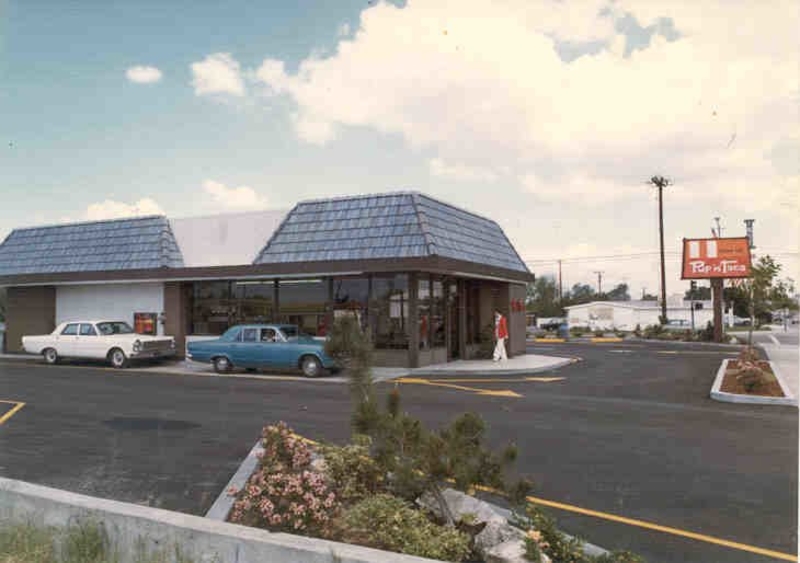
Some of the last remaining franchise locations flipped their name slightly to “Pop ‘N’ Taco.”
Mighty Casey’s
Mighty Casey’s was a fast food chain that started in Atlanta, Georgia in 1980. It became popular in the metropolitan area and was well-known for serving quality fast food. Customers were always served generously, which is a big part of why people found it so appealing.

The Mighty Casey’s menu included Hamburgers, chopped BBQ sandwiches, Cajun Wings, and Frankfurters.
Mighty Casey’s
Mighty Casey’s set itself apart from other fast food chains by featuring more exclusive ingredients in their food, which included Wisconsin beef, signature sauces, and batter.
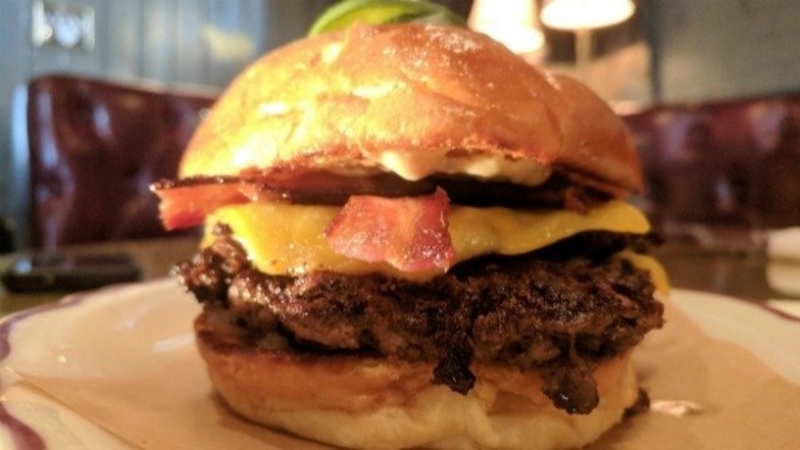
In 1994, the restaurants were bought out by another fast food chain called Krystal. Almost all of the chains were then converted into Krystal restaurants.
Yankee Doodle Dandy
Yankee Doodle Dandy first opened in 1966 and was founded by business brothers Chris and Bill Proyce. After 10 years, their restaurant started to explode in the Chicago area.

The chain reached 27 locations in its prime and most of them were franchised. Yankee Doodle Dandy was well known for its red, white, and blue motifs. As the name suggests, it depicts the perfect American burger.
Yankee Doodle Dandy
After a while, the brothers wanted to get out of the fast food business and decided to pursue another restaurant idea.
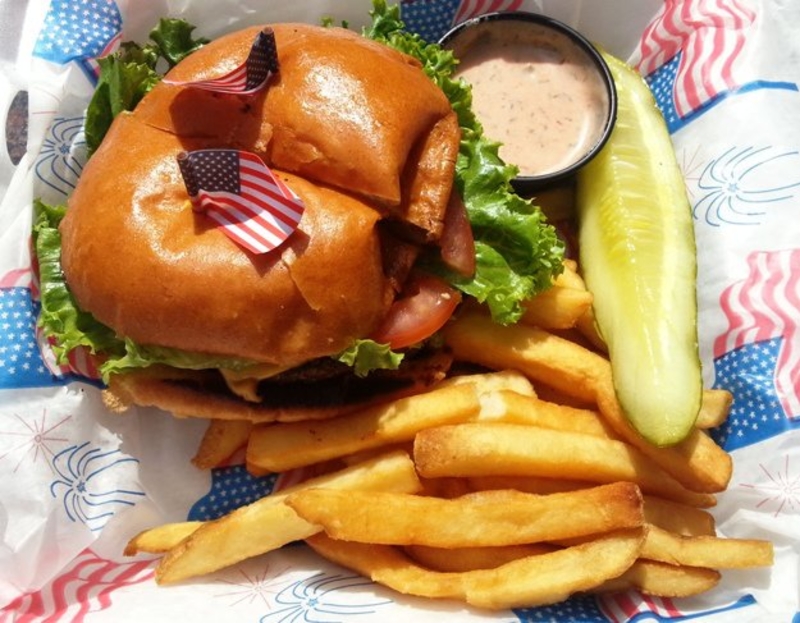
Slowly, the chains started dying until the last one finally closed. In 1988, the brothers opened four of their own casual dining restaurants called Bailey’s Restaurant & Bar.
Doggie Diner
Doggie Diner was iconic for its trademark mascot, the Dachshund, who also happens to be dressed in a chef’s hat and cute bow tie.

It originally started out as a small chain of restaurants in San Francisco and Oakland. As you may have assumed, they specialized in hamburgers and hot dogs (pun totally intended!)
Doggie Diner
From its inception in 1948, under the guiding hand of founder, Al Ross, Doggie Diner quickly started spreading throughout the area.
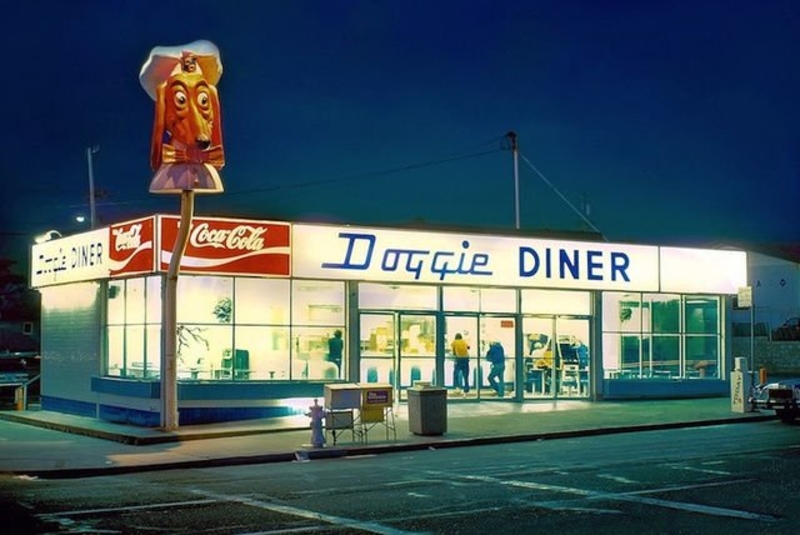
In 1986, the chain closed, but the mascot has remained a part of the local pop culture up until this day.
Ameche’s Drive-In
During the 1960s, Ameche’s was a chain of Baltimore-area drive-ins with five locations. It was originally founded by legendary NFL football player, Alan Ameche.

The brand’s mascot is a little football player, which remained the restaurant’s trademark.
Ameche’s Drive-In
Ameche’s Drive-In was famous for its Powerhouse Burgers, which were described as “a banquet on a bun.”
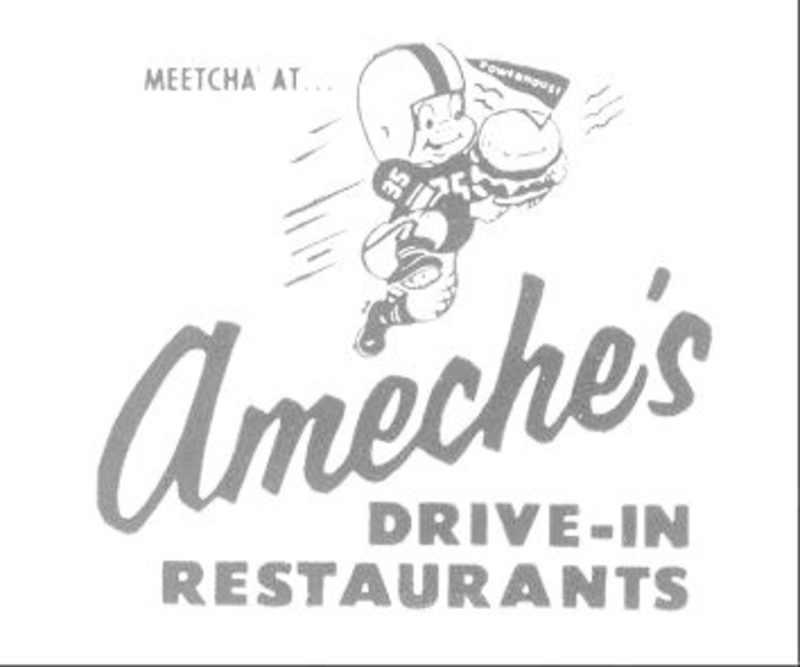
Some even say this was where McDonald’s got the idea for its Big Mac, eight years before it made its debut. Despite the rumors, Ameche’s remains a popular favorite.
G. D. Ritzy’s
G.D. Ritzy’s was the place to be during the 1980s. The restaurant was founded in 1980 by ex Wendy’s executive, Graydon Webb. Ritzy’s was a “luxury grill” with a 1950s diner feel.

Aside from your daily fix of hot dogs and burgers, it also served ice cream to cater to those with a sweet tooth!
G. D. Ritzy’s
The chain had 120 locations originally, but it started going down and eventually ended up with just three locations by the time it was liquidated in 1991.

Although most of their stores have already closed down, there are still some open in Evansville, Indiana and Huntington, West Virginia.
Valle’s Steak House
Valle’s Steak House was considered revolutionary during its time. In 1933, loyal customers were offered their famous surf and turf meal for a fairly low price, when it was opened by Donald Valle.

It eventually became popular and expanded to more and more locations throughout the 1970s.
Valle’s Steak House
According to rumors, the downfall started when Valle’s Steak House grew too ambitious with their expansion.

To make matters worse, there was an oil crisis that caused many economic problems. Sadly, in the year 2000, the last location closed in Portland Oregon.
La Petite Boulangerie
The name sounds very classy, doesn’t it? La Petite Boulangerie, otherwise known as “The Little Bakery,” was an American chain that started with only two stores in 1977.

Shortly after opening, it was bought by PepsiCo and franchised out. From there, the chains started growing rapidly. La Petite Boulangerie had 140 locations nationwide at its peak.
La Petite Boulangerie
Then they were bought out by Mrs. Fields Original Cookies Inc. and ended up trading hands a few times until they were finally acquired by Java City.
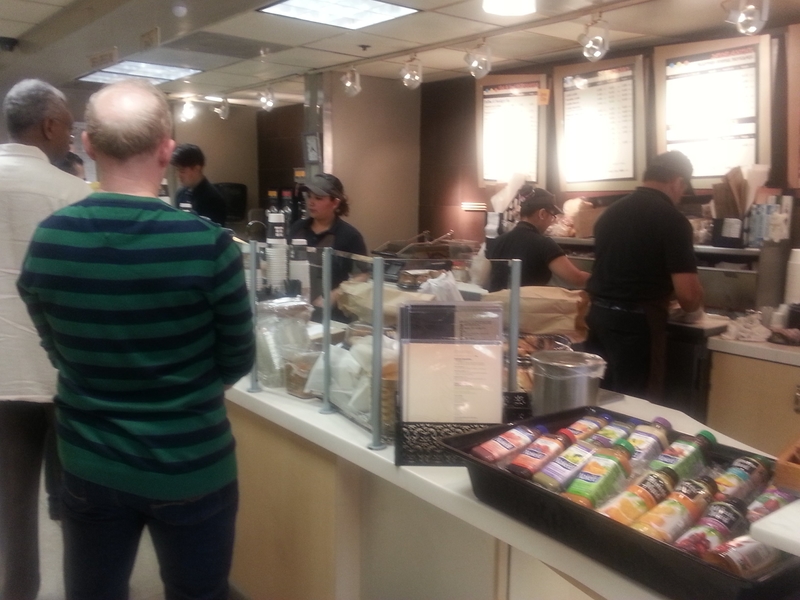
There were no longer any La Petite Boulangerie locations by the end of 2000. No matter how many times this restaurant changed, it is still worthy of making this list.
The All-American Burger
The All-American Burger was a Southern California fast food joint. While it was never more than a regional establishment, The All-American Burger became famous because it was featured in the 1980s teen film Fast Times at Ridgemont High. The final location was closed in 2010.
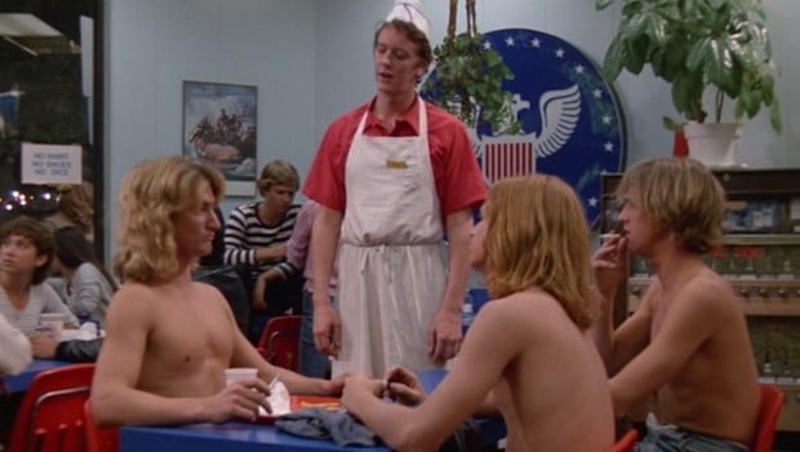
If you are craving those burgers though, and you just happen to be located on the east coast, a Massapequa, Long Island establishment started using the same name and logos.
The All-American Burger
It has been open since 1961 and is still serving the same delicious burgers to this day.

Which means there’s nothing stopping us from going for our burger fix right now!
Mr. Steak
Mr. Steak was very popular in the 1970s. If you were born during that time, then this restaurant chain will bring back a lot of good memories. While steak was quite obviously their game, Mr. Steak unfortunately wasn’t juicy enough to keep up with the competition.
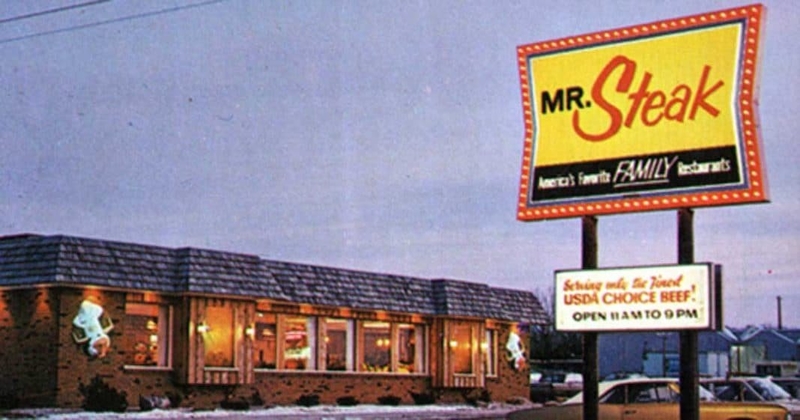
Their main competitors were chains like Sizzler and Stuart Anderson’s Black Angus. Since they couldn’t withstand the stiff competition, Mr. Steak eventually filed for bankruptcy in 1987.
Mr. Steak
Before they closed though, they had a total of 300 locations all over the United States.
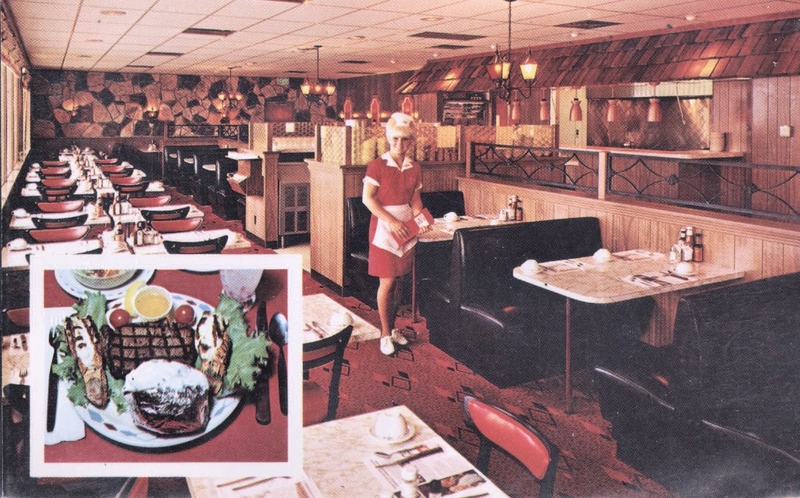
If you were part of the 1970s, then this restaurant should definitely be on your list of nostalgic establishments.
Druther’s
While we’re sure you’re aware of Burger King, you may be surprised to learn that there was also a Burger Queen, also known as Druther’s. Nifty, huh? The chain operated between 1963 and 1981.
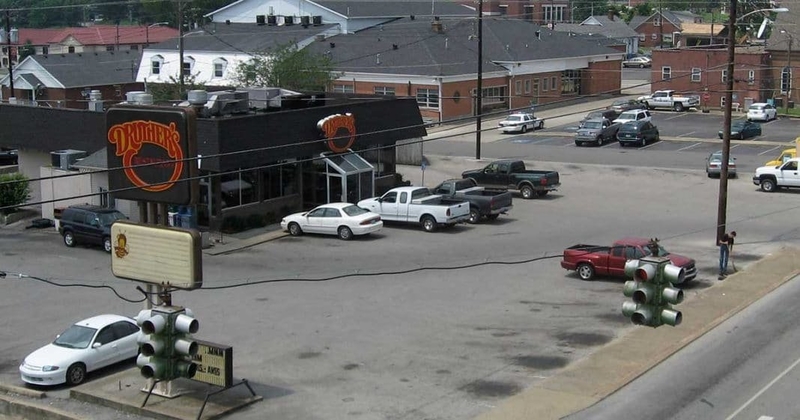
Based in Louisville, Kentucky, the burger/fried-chicken joint’s mascot was a giant bee named Queenie Bee.
Druther’s
In the spirit of old-school slogans, the restaurant’s (purposely misspelled) motto was “I’d Ruther Go to Druther’s Restaurant.” Though the chain is long defunct, one Druther’s remains in Campbellsville, Kentucky.
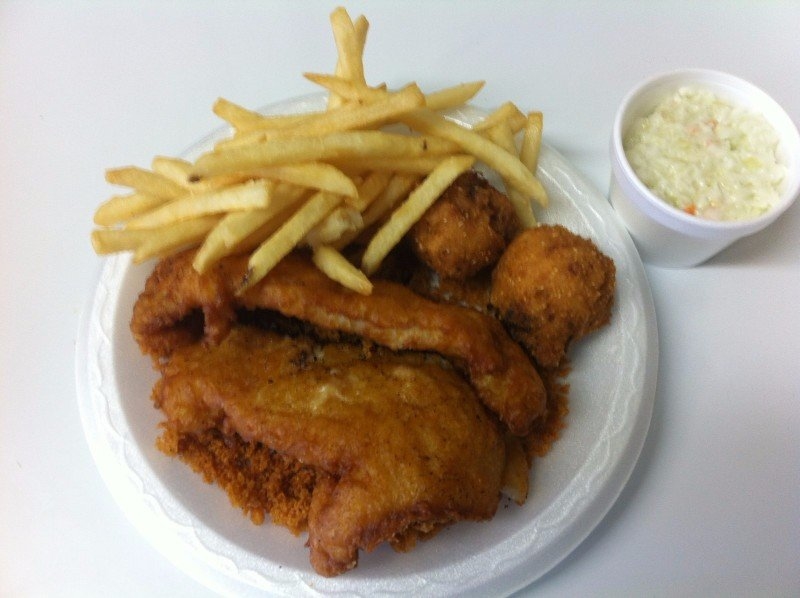
It makes our list because we just loved those mascots! They were too cute and, along with the food, those Queenie Bees made everything way more entertaining.
A&W Drive-Ins
OMG! We absolutely loved A&W! This famous fast food chain brings back a lot of memories. A&W Restaurants, Inc. is a chain of fast food restaurants that came to be synonymous with draft root beer and root beer floats. Who said beer had to be alcoholic?
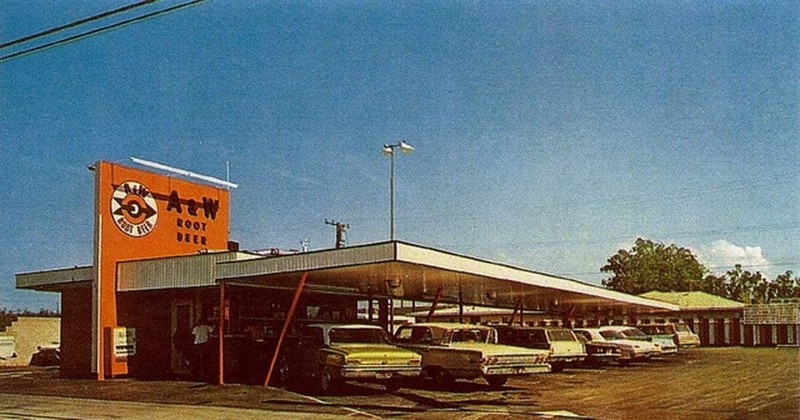
The restaurant was founded in 1919 and remains one of the country’s oldest chains.
A&W Drive-Ins
They were well known for their “Frosty Mugs”, and one of the first ones to come up with the drive-thru service.
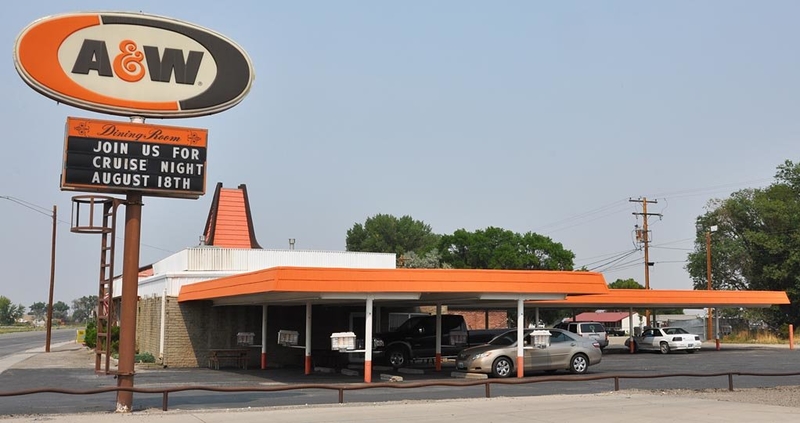
Good news, unlike many of the restaurants that made this list, A&W is set to continue its legacy and open more restaurants than it ever closed.
Rax Roast Beef
One business that has had possibly the most name changes in restaurant chain history is Rax Roast Beef. It was originally named Jax Roast Beef, then later changed to Rix Roast Beef.
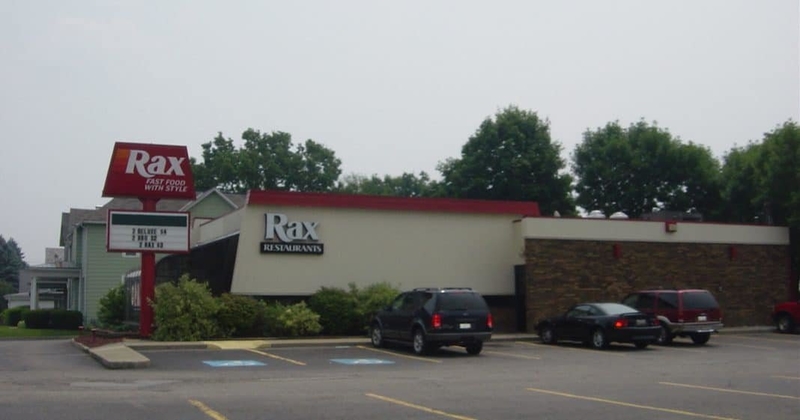
In the 1980s, Rax reached its high point, when they started adding salad bars and other food stations. This made them one of the country’s most successful chains, but only for a short time. Problems in management caused issues in the business during the early 1990s.
Rax Roast Beef
As of 2017, there’s only a hand full of these restaurants still operating.
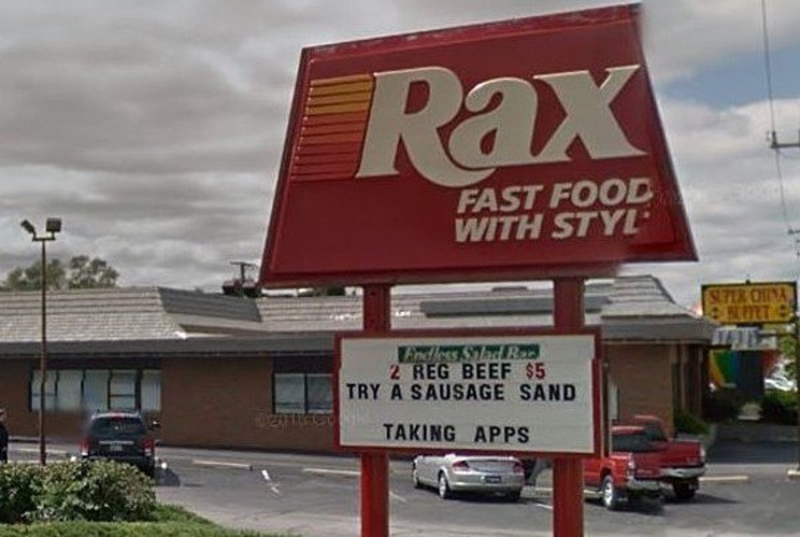
It’s okay though, because if you ever want to try some Rax Roast Beef (before they change the name again), you can always go down and visit. Awesome!
Claudia Sanders, The Colonel’s Lady
The Colonel’s Lady could be described as the restaurant franchise that never was. By the mid-1960s, Kentucky Fried Chicken founder, Harland Sanders, had sold his interest in the famous franchise.
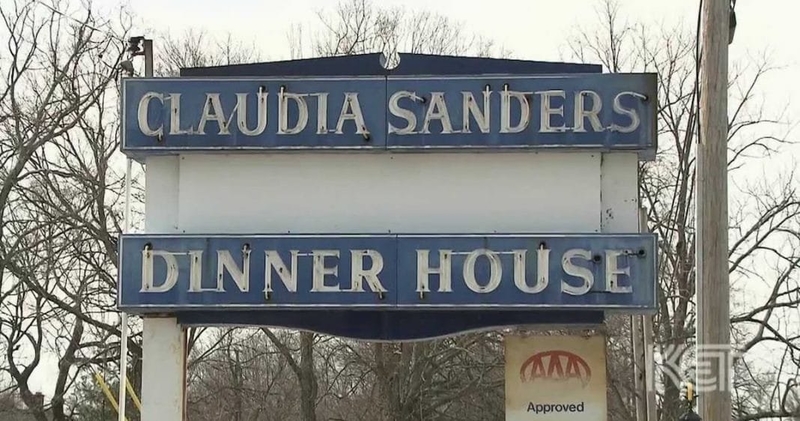
While he may have been bought out, Sanders still maintained his role as the iconic spokesperson. Meanwhile, he and his wife set their sights on opening a new, sit-down restaurant in which to serve his chicken. The name they settled on was Claudia Sanders, The Colonel’s Lady.
Claudia Sanders, The Colonel’s Lady
However, in the eyes of the law, the Sanders were no longer the owners of the infamous, secret recipe. Eventually, a settlement was reached that allowed the Sanders to continue selling the chicken at one location in Shelbyville, Kentucky, which is still in operation today.
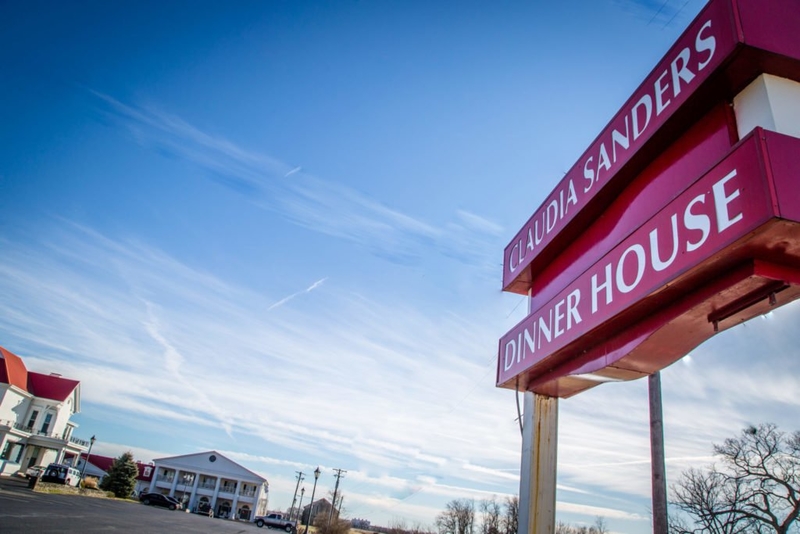
Since they were sued by KFC, they didn’t really have a choice.
Pioneer Chicken
Just the name of this place makes it sound interesting. Pioneer Chicken was a staple in California in the 1980s. The chain had a total of 270 locations and was advertised by legends Chick Hearn and (pre-trial) O.J. Simpson.
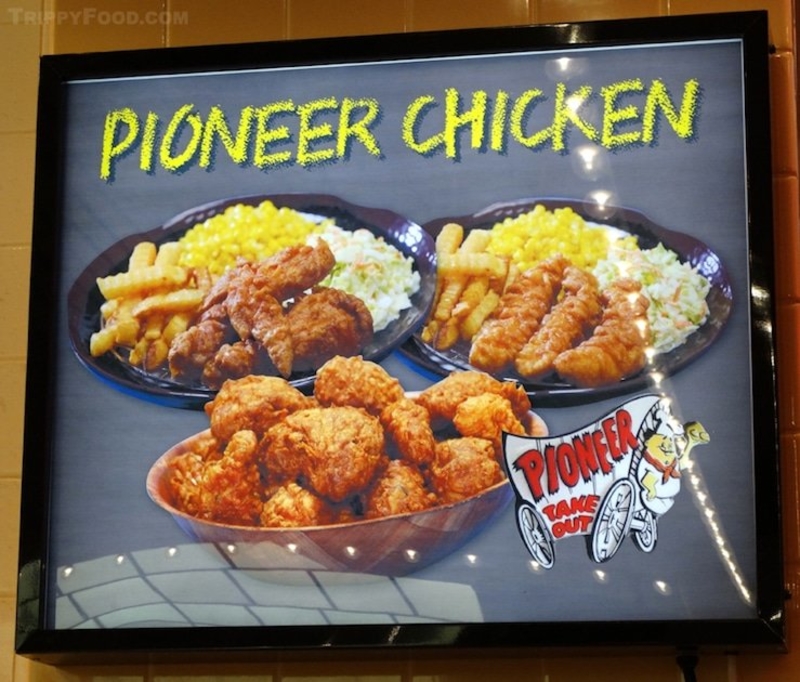
In the 1990s, however, the restaurant lost its relevance and market share. Since 2017, there are only two locations remaining, located in Boyle Heights, California, and Bell Gardens, California.
Pioneer Chicken
If you haven’t tried out their food yet, it’s worth getting in while there’s still two locations left.
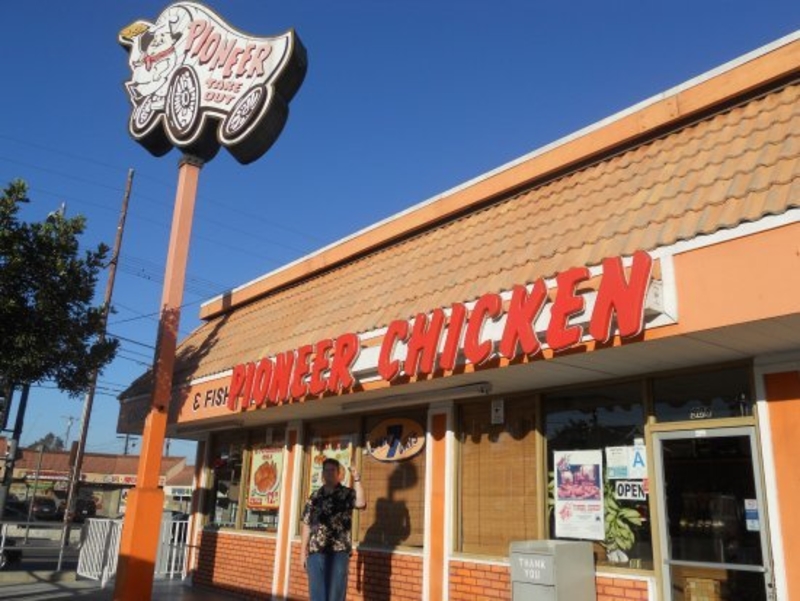
We’re willing to wager it will be worth every second and every penny!
Carrols
Here’s another burger joint with the power to stir up your memories of the past. Carrols was a chain of fast food burger joints from the 1950s and 1970s. One of their signature menu items was the Club Burger. In fact, all their items had the slogan “Home of the Club Burger”.

Carrols was established in the early 1960s by Herb Slotnick. It started off as an ice cream franchise, Tastee-Freez, and was named after Carol Marantz, the daughter of Tastee-Freez’s founder.
Carrols
In 1975, most of the U.S. locations were converted to Burger Kings.
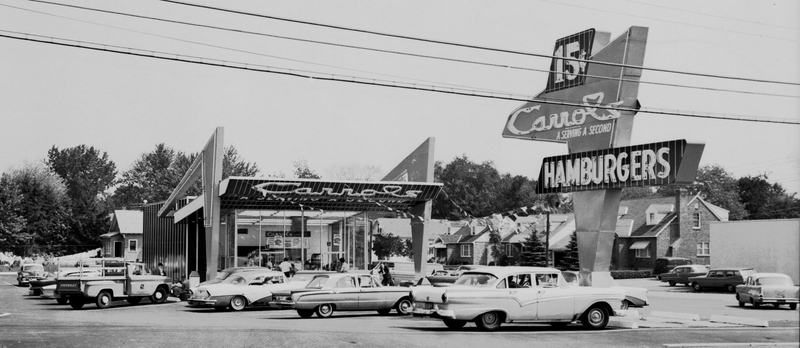
The last Carrols, located in Finland, was converted into a Finnish chain in 2012.
Little Tavern
Here’s another fascinating food fact for you guys: the first Little Tavern opened on the East Coast, six years after White Castle was founded in Wichita. Like the infamous White Tower, Little Tavern was strikingly similar to White Castle, selling hamburgers from a castle design shop front with a block construction.
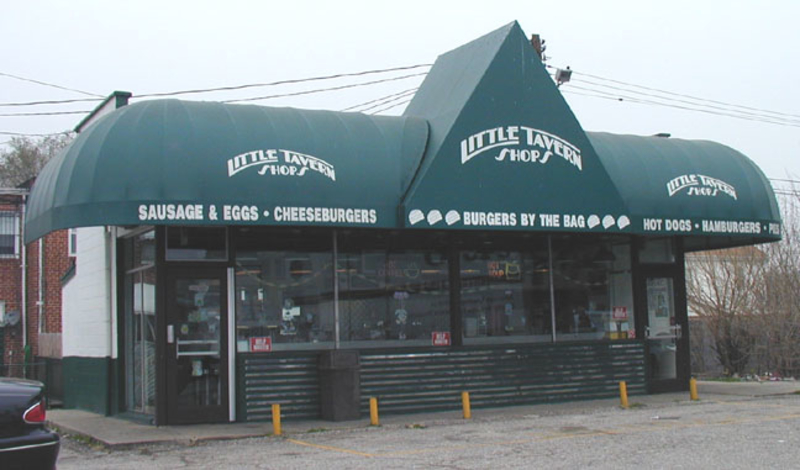
They had 40 locations operating in and around Baltimore, Arlington and Washington, D.C. Sadly, the last store location closed in 2008.
Little Tavern
Let’s face it, there were quite a lot of chains back then that replicated White Castle, and these guys were one of them.

Then again, they still served some good food, which means they’re entitled to a spot on this list.
Nedick’s
This chain started in New York City, in 1913, and expanded throughout the 1950s. They also had locations in New York, New Jersey, Maryland, Pennsylvania, and Washington D.C. Do you guys want to know how they started?
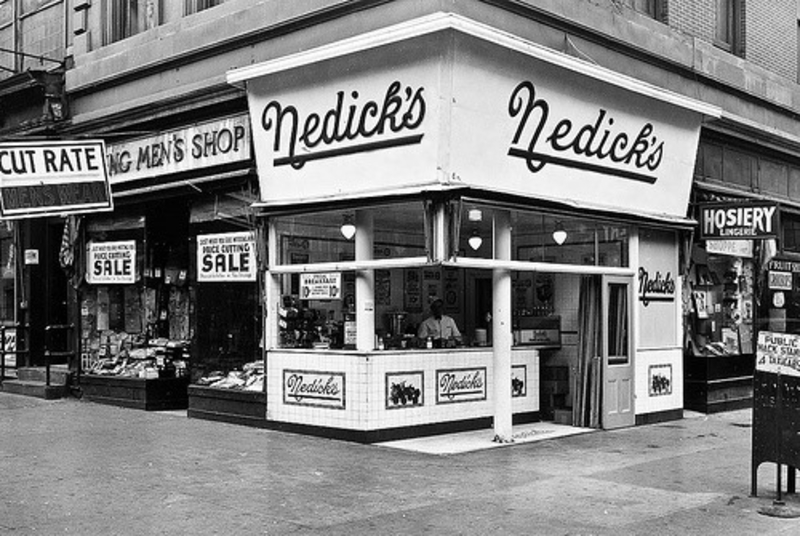
Remarkably, they originally only sold an orange drink! Over time, they added coffee, donuts, and hot dogs to their menu.
Nedick’s
Since there was a lot of competition (from the likes of McDonald’s and Dunkin Donuts), the chain closed in 1981.
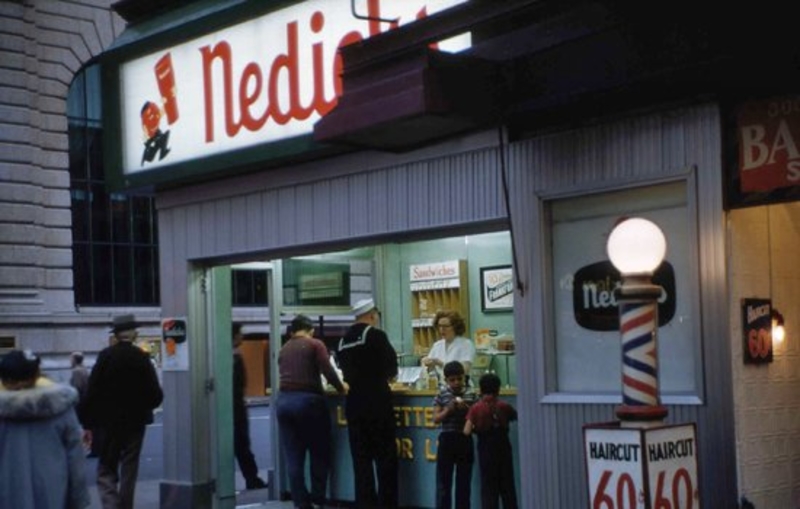
In addition to the competition they were up against, they also got a lot of criticism, in their Central Park Zoo location, for having bad quality food.
Shrimp Boats
If you love seafood, then this restaurant will be on the top of your list. Shrimp Boats was a famous seafood restaurant popular between 1955 and 1974. Their store locations grew to a total of 95 at its peak.

While most of their stores have now closed, there are still seven independent chains open until this day, located in Georgia, South Carolina, and North Carolina.
Shrimp Boats
We all love shrimp, so if you’re craving some, this place will definitely be able to satisfy it. Really, who could say no?
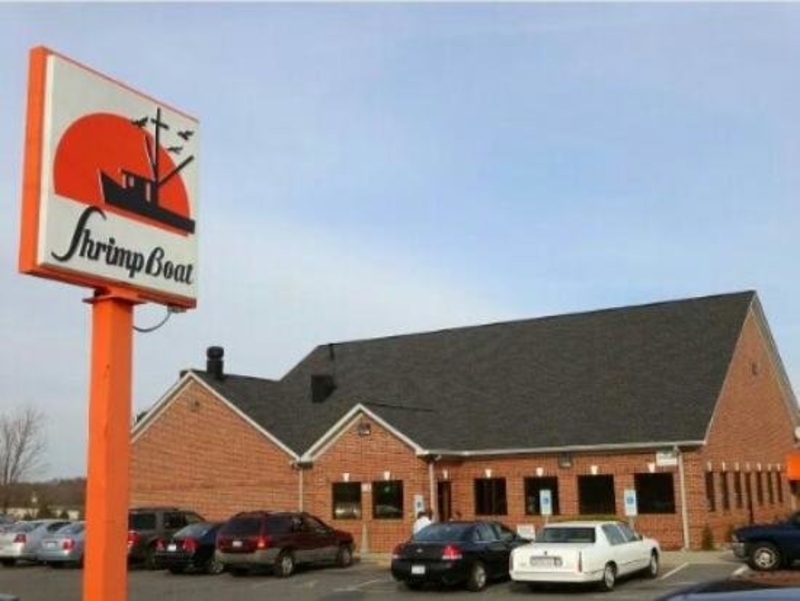
Personally speaking, Shrimp Boats is a place that’s given us a lot of fond memories to look back on. Do you have any memories in this place?
Top Hat
Okay, so we know that we have listed a lot of White Castle copy-cats in this list, but here’s one with a different spin to it, which makes it as compelling as the others. Top Hat was first brought into the world of fast food business by Peter Everet Westberg, and Fred A. Simonsen, in Detroit, Michigan in 1955.
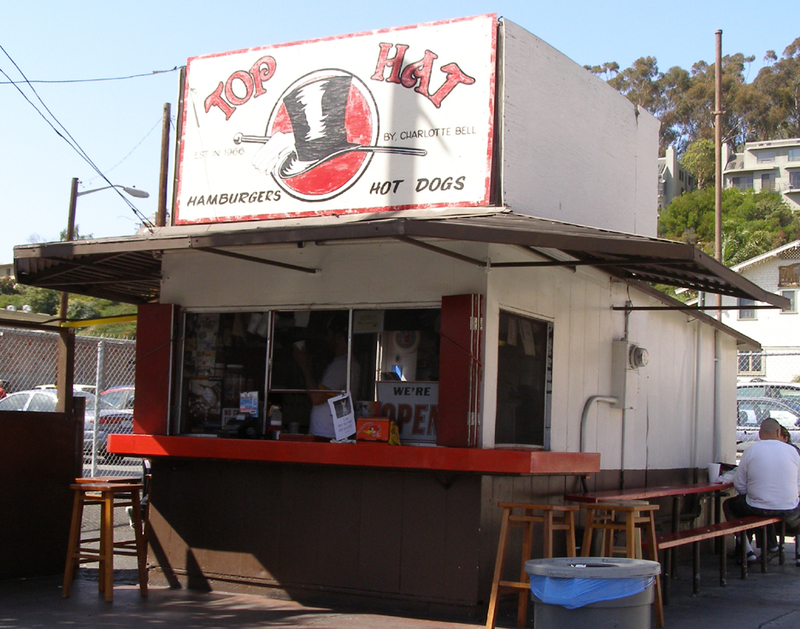
While most White Castle replicas were created from the outside looking in, Westberg and Simonsen had the benefit of insider knowledge, since the pair were both former White Castle employees.
Top Hat
This chain of restaurants only had 12 operational stores that were eventually sold to Church’s Chicken and Elias Brothers in 1984.
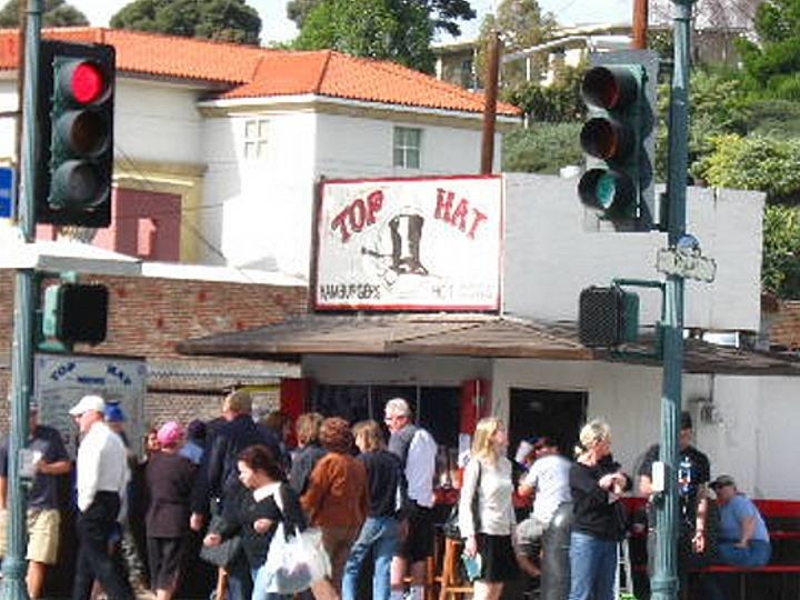
The Top Hat tale may have been short lived, but it was still a good place to go to, so they’ve earned their spot on this list. Awesome!
Bill Knapp’s
In 1948, Bill Knapp’s was founded by Clinton B. Knapp. It was originally established in Battle Creek, Michigan and was known for its menu of limited breakfast baskets, sandwiches, and luncheon dinner plates. Believe it or not, this was one chain that was particularly popular with senior citizens.
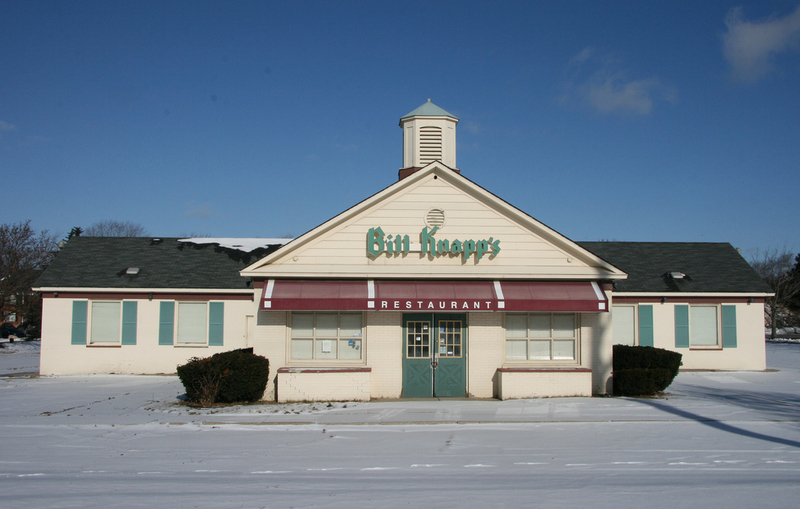
Business unfortunately declined when the chain decided to change its menu to home-style cuisine, in 1966.
Bill Knapp’s
This was a cost-cutting strategy but, since they could not keep up, they finally closed their last location in 2002.
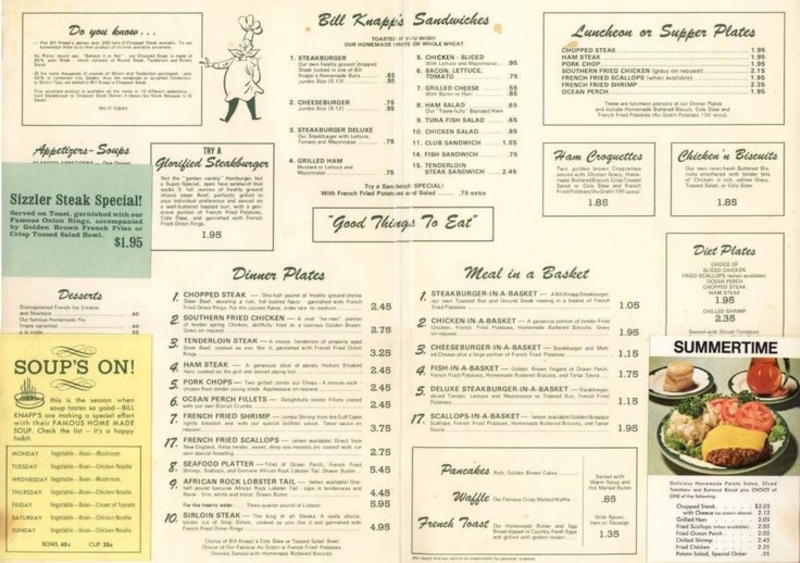
Knapp’s was a nice little place though, and we will remember it for its signature dishes.
Morrison’s Cafeteria
If you and your family attended church in the southern part of the United States on a Sunday, prior to 1998, then you would most likely remember what it was like to eat at Morrison’s Cafeteria.

This throwback place was known for their authentic southern cooking. The restaurant was established by J.A. Morrison in Mobile, Alabama in 1920. It had a total of 151 locations in 13 states at its prime.
Morrison’s Cafeteria
Unfortunately, the whole concept of cafeteria dining started to decline by the 1990s. Eventually, Morrison’s was acquired by Piccadilly Cafeterias in 1998.
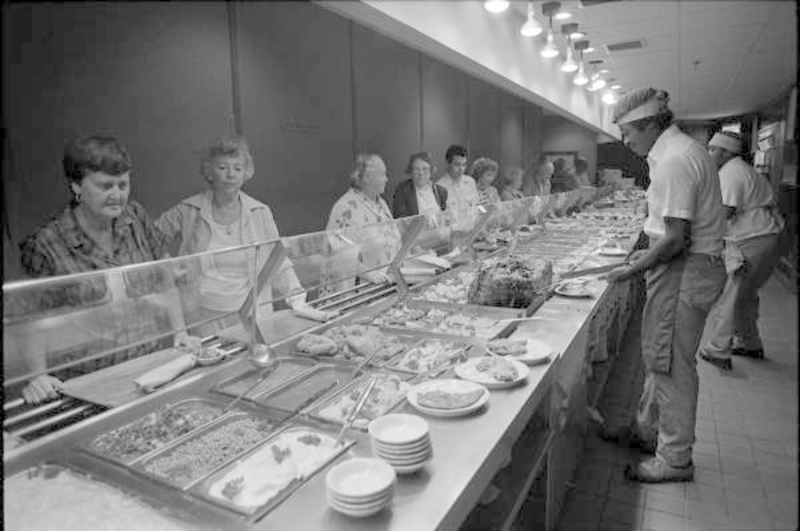
But they were also in the midst of a downturn, which is why there’s only one location left now.
Po’ Folks
Po’ Folks was established by Malcom Hare in 1975. The restaurant was named after a 1961 hit single by country music singer, Bill Anderson.
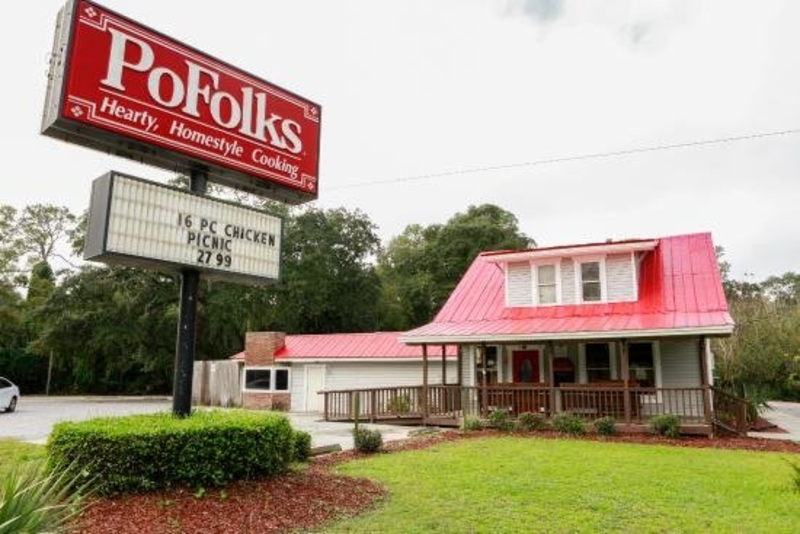
Their success was short-lived, when they started declining, to then rise again very swiftly.
Po’ Folks
Nine years after it was established, the chain finally grew to about 102 restaurants in 17 states. Four years later, in 1988, the business filed for bankruptcy. But don’t worry.
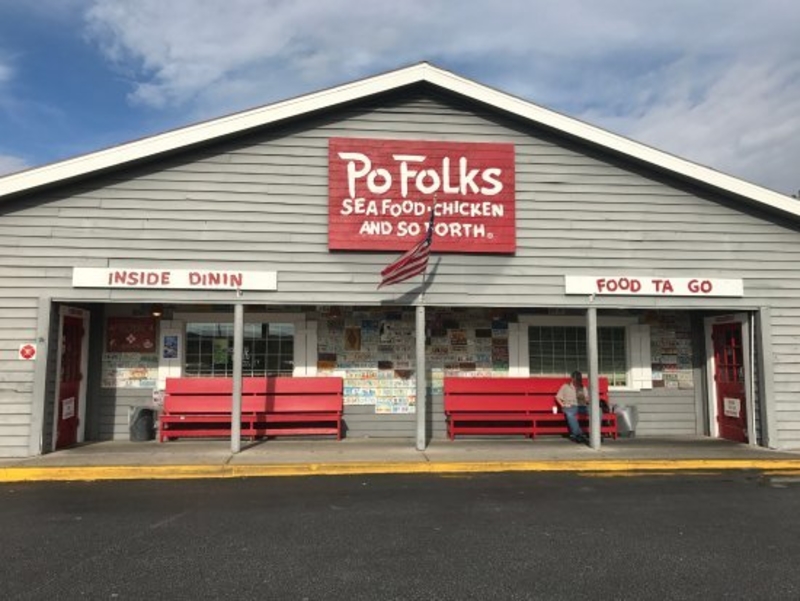
While most of their locations were closed and all their assets were sold, eight restaurants are still alive and located in Florida’s Panhandle, St. Petersburg, Florida and in Enterprise, Alabama.
Roadhouse Grill
Here’s a name that might sound familiar to you; the Roadhouse grill was a popular casual dining steakhouse that was a creation of John Y. Brown Jr. in 1992.
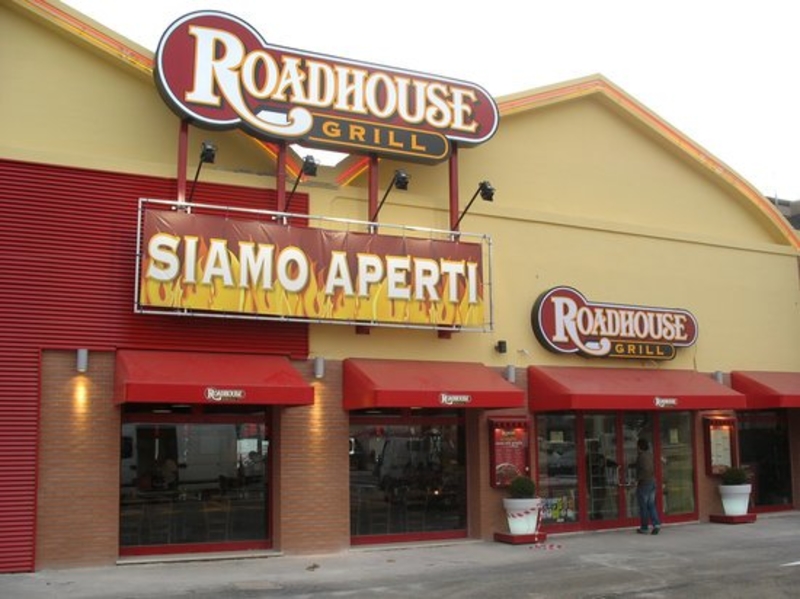
These chains could be found along major interstate interchanges all throughout the eastern United States. Their original location was in West Palm Beach, Florida. In 2007, the chain filed for bankruptcy.
Roadhouse Grill
In 2008, the company was eventually forced into liquidation, which lead to the abrupt closure of its last 20 locations.
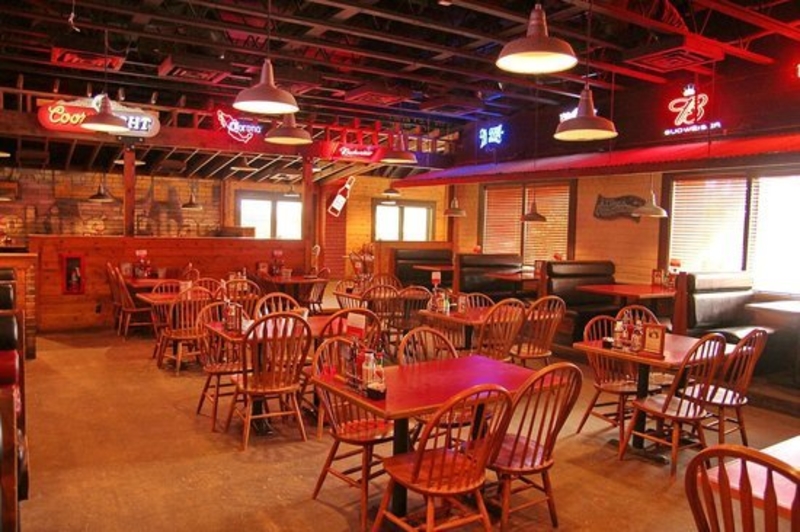
Despite its sad demise, we all still remember this place for its yummy, affordable steaks and all the memories that came along with them.
Ground Round Grill & Bar
Here’s another Bar and Grill to add to our list. Ground Round is a family style dining chain that was first founded in 1969. It was called a “neighbourhood pub” and catered to all kinds of guests, including couples and families.
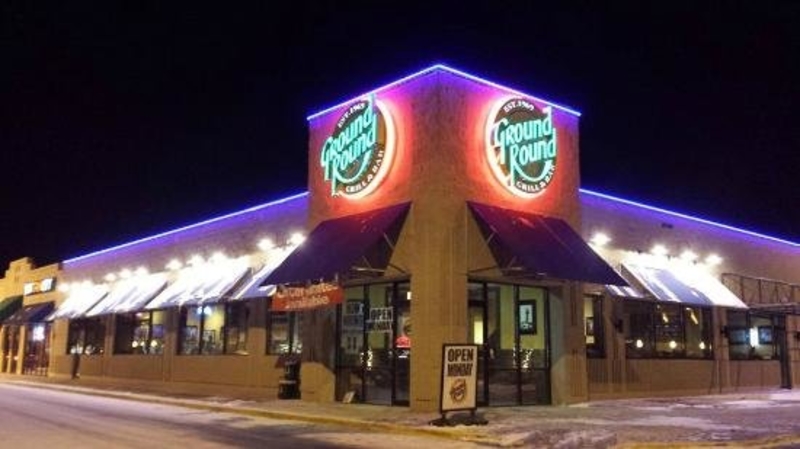
Everyone always felt comfortable in this place. Like many of the other restaurants on our list, Ground Round eventually filed for bankruptcy.
Ground Round Grill & Bar
Unlike many of the others though, Ground Road Grill & Bar hasn’t completely disappeared.
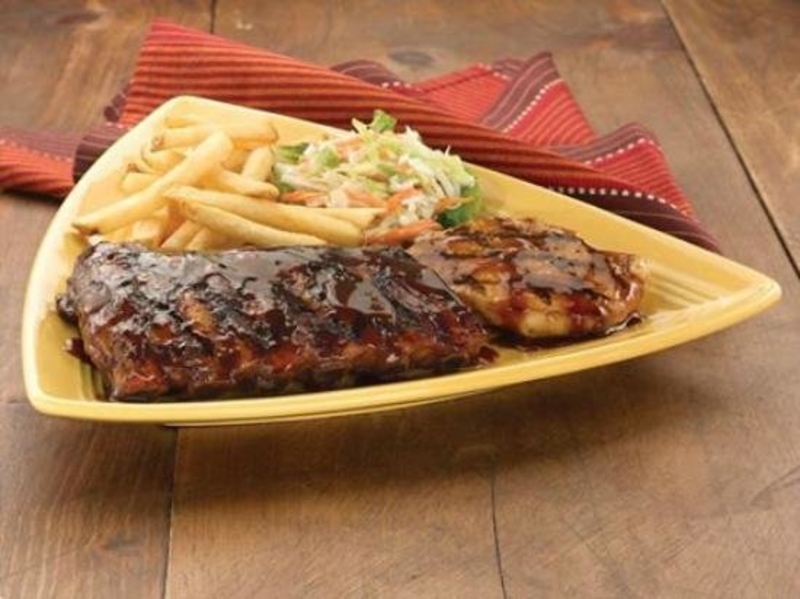
In 2004, it was bought by a former franchisee. Although there were a couple of changes made, it has still struggled to survive in recent years, maintaining only 25 restaurants as of 2011.
Country Kitchen
In 1939, Country Kitchen came to life and developed a reputation as one of the top hamburger stands in Cincinnati, Ohio. It has been a national chain since 1958.

In recent years, the chain has struggled to continue attracting customers. However, it is still concentrated in the Midwest and Plains states.
Country Kitchen
Between 2001 and 2011, Country Kitchen closed almost 200 locations. The total number of restaurants fell from 249 to 52, thanks to sales declining by more than 80% during the same period.

According to Technomic’s Tristano, the restaurant exists in the highly competitive mid-scale family-style market, which has been crowded out by fast, casual dining.
Damon’s Grill & Sports Bar
Founded in 1979, Damon’s was initially based in Columbus, Ohio. It was considered “a leading full-service, casual dining restaurant concept” and most of its restaurants were in the Midwest and Southeast United States, as well as the United Kingdom.
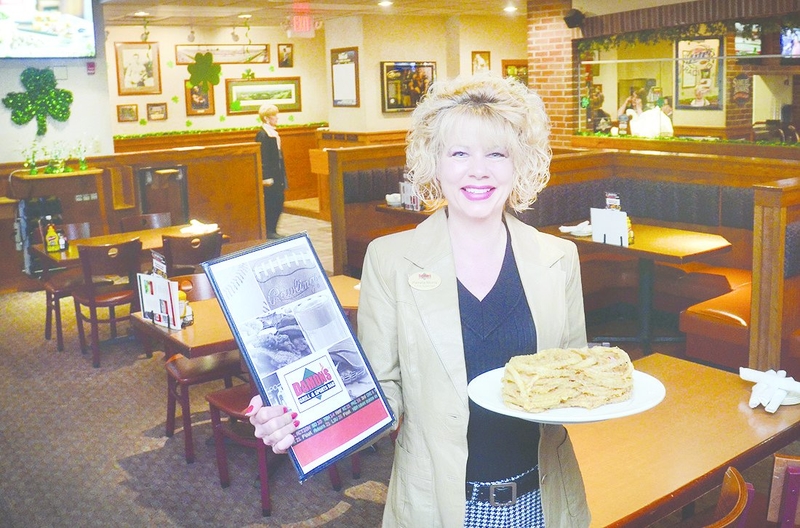
The chain filed for bankruptcy in 2009, because it was part of the struggling, full-service barbecue restaurant segment of the market.
Damon’s Grill & Sports Bar
Damon’s had just $70 million in sales as of 2011, down more than 75% from 2001 when it had nearly $285 million in sales.
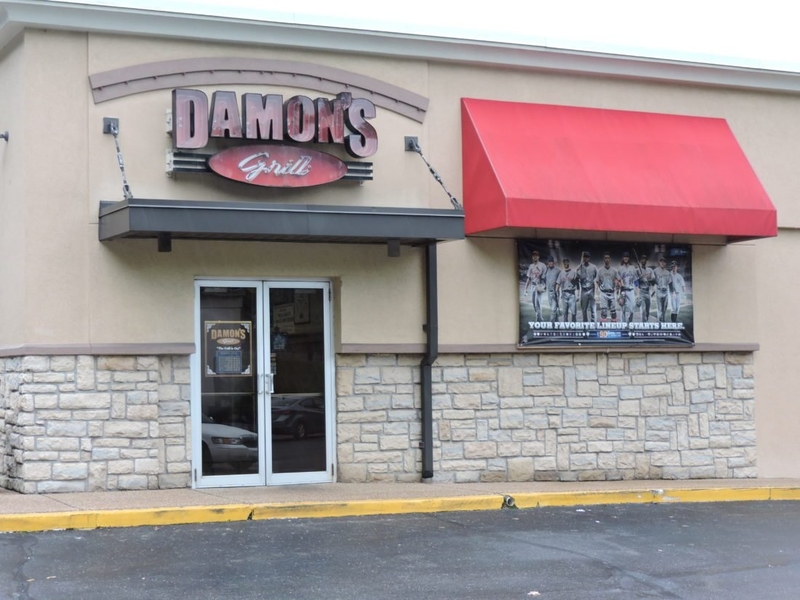
Nonetheless, it was still a favorite, and still holds many of our memories. Wouldn’t you guys agree that this restaurant deserves a spot on this list?
TCBY
In 1981, TCBY started as “the country’s first frozen yogurt shop.” And who doesn’t love frozen yogurt? It’s healthy, and it’s a better alternative to ice cream. We are definite fans!
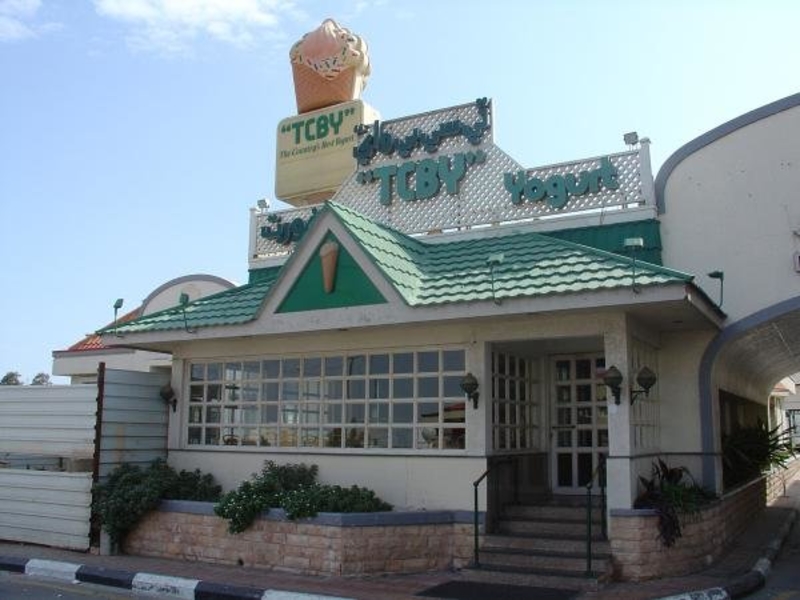
The chain was purchased by Mrs. Fields Holdings in 2000. The Chicago Tribune noted that “both TCBY and Mrs. Fields have considerable brand equity among consumers,” at the time.
TCBY
Unlike all the other restaurants on this list, the company filed for bankruptcy protection in 2008, and requested a restructuring deal to avoid bankruptcy.
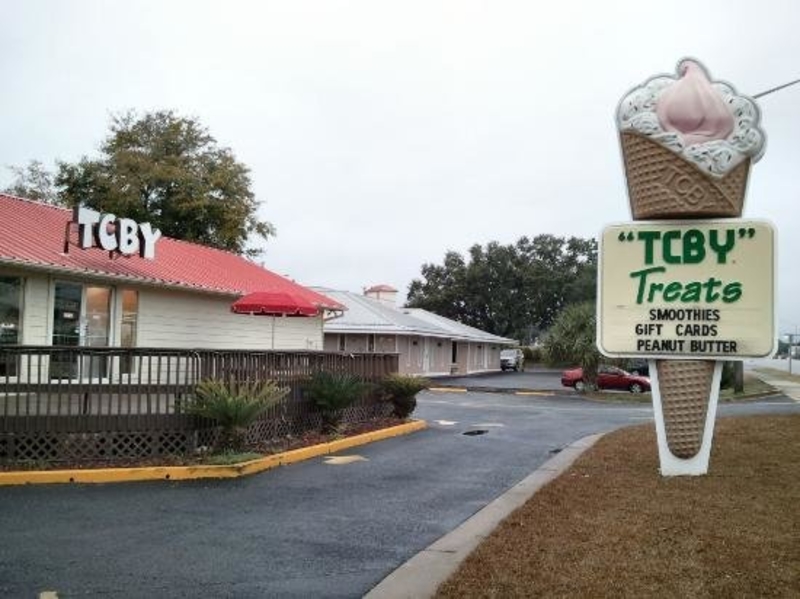
Between 2001 to 2011, TCBY shut well over 1,300 stores, leaving just 405 locations as of 2011.
Tony Roma’s
Here’s a familiar chain that you can breathe a sigh of relief over because it is still alive to this day! Tony Roma was founded in 1972 and has claimed to be one of “the largest casual theme restaurant chain specializing in ribs in the world.”
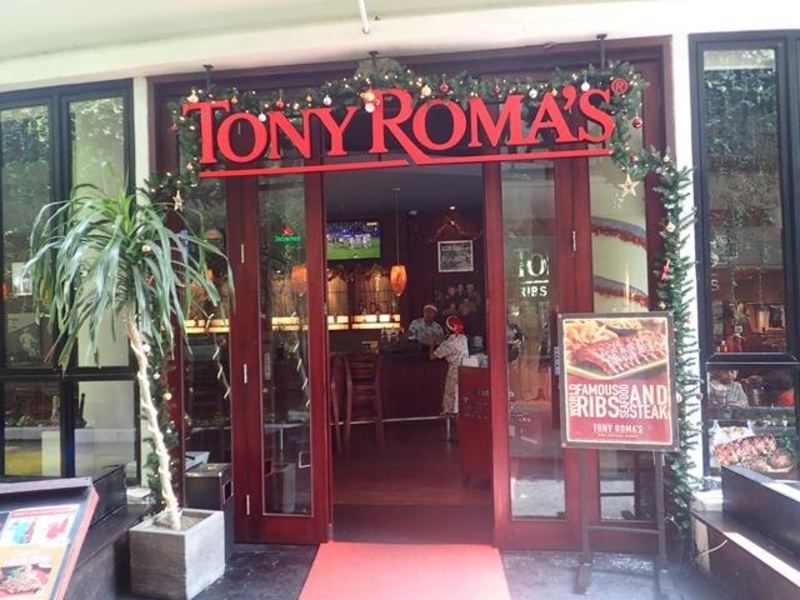
Tony Roma’s domestic sales fell by over 70%, while its total number of U.S. restaurants declined from 162 to 46 between 2001 and 2011. The restaurant’s parent company, Romacorp Inc., filed for bankruptcy in 2005.
Tony Roma’s
While it took a definite hit, Tony Roma’s is still active internationally, with restaurants in over 30 countries.

Even though it disappeared from the United States, you can still visit the other restaurants… you’ll just have to leave the United States to do so! Any excuse to travel, right?
Don Pablo’s
“Big Tex Bold Mex.” is what Don Pablo’s described itself as. The company that owned Don Pablo’s – Avado Brands – went bankrupt twice in the last 10 years, first in 2004 and again in 2007.

The chain was sold to a restaurant group started by Avado’s bankruptcy lender, in 2008. Don Pablo’s struggled as a fast-casual restaurant, just like the Chipotle Mexican Grill.
Don Pablo’s
Despite their struggle though, they have still managed to become America’s preferred choice for Mexican cuisine.
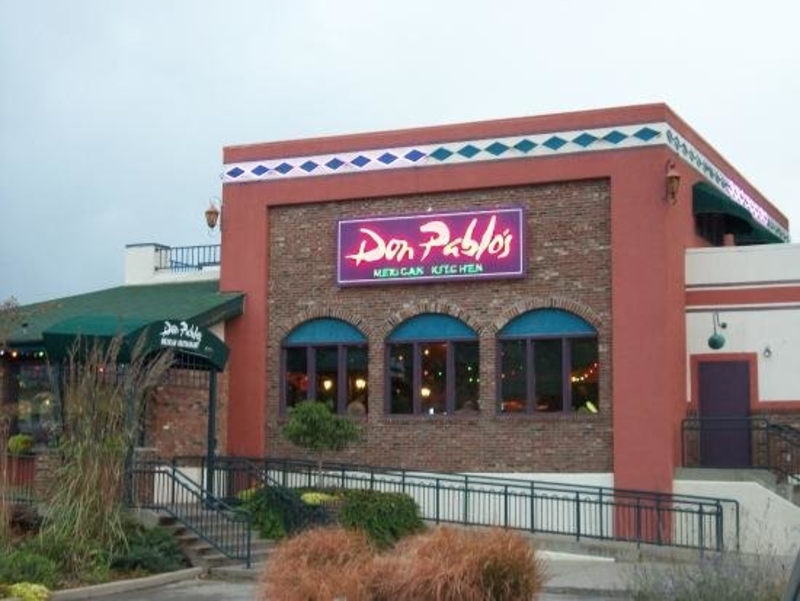
As we mentioned in previous slides, Don Pablo’s is one place you can rely on for top-of-the-line Mexican food!
Blimpie Subs & Salads
Here’s a name that you have probably heard before. In 1964, the first ever Blimpie opened in Hoboken, New Jersey. They are famous for being the first sub sandwich chain.
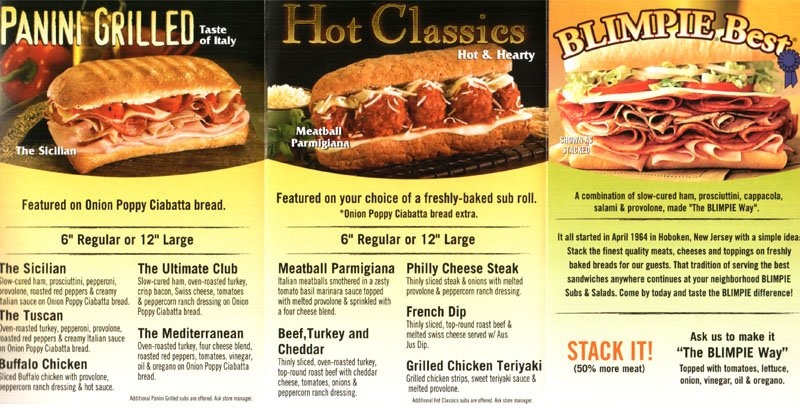
Of course, nothing is going to beat Subway, but this one was America’s first favorite. In fact, at its peak, it was the third largest sub sandwich chain. Despite its success, Blimpie Subs & Salads has been struggling over the last decade.
Blimpie Subs & Salads
In 2001, Blimpie had just 739 stores and $115 million in sales, down from 1,853 stores and nearly $300 million in sales.
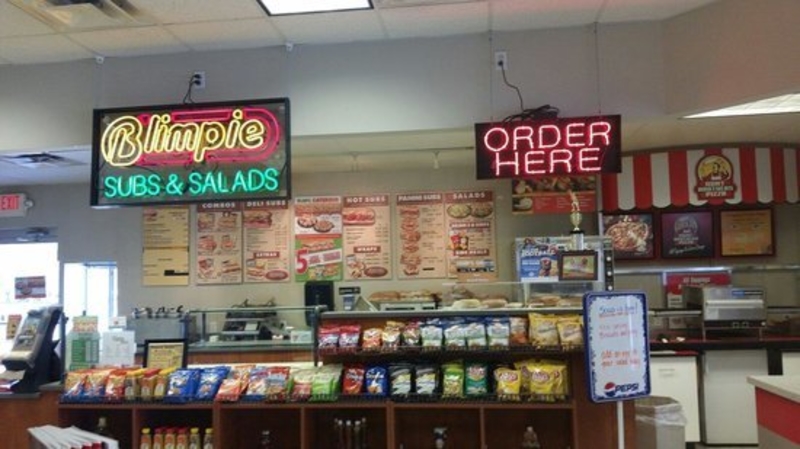
After a while, the restaurant was purchased by Kahala, a franchising company that also bought Cold Stone Creamery in 2007.
Wag’s
Did you know that Walgreen’s went into the restaurant business back in the 1970s? Yup, it’s true! Wags modeled all their restaurants on Denny’s and Big Boy, a clever move that made them pretty popular.
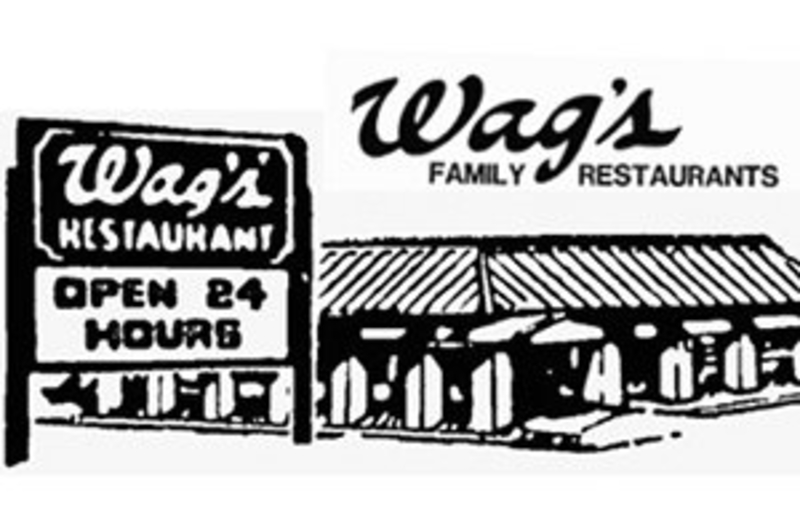
The thing we loved most about them was that they offered a 24-hour diner. Unfortunately, the idea didn’t catch on.
Wag’s
By 1988, all the 90-plus Wag’s stores had been sold to the Marriott. In the early 1990s, the hotel chain decided to sell off the restaurants, but they couldn’t find a buyer.

It’s sad to see these cute little diners go, but we have replacements. All together, Wag’s was still a great restaurant that gave us a lot of happy memories!
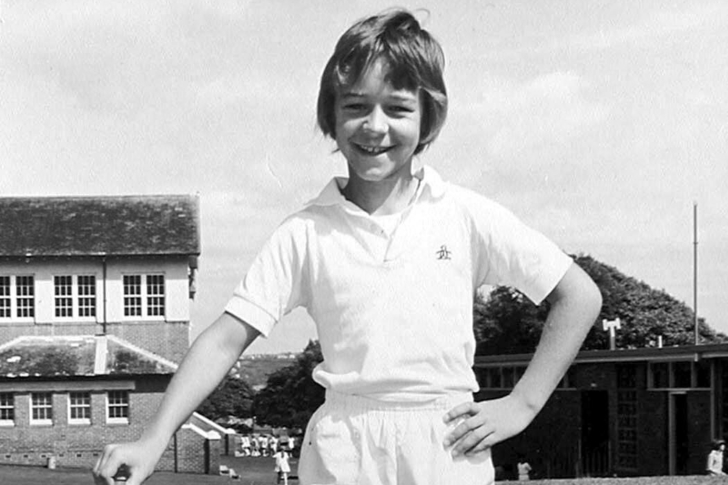
These Stars Have Soap Operas to Thank for Their Careers
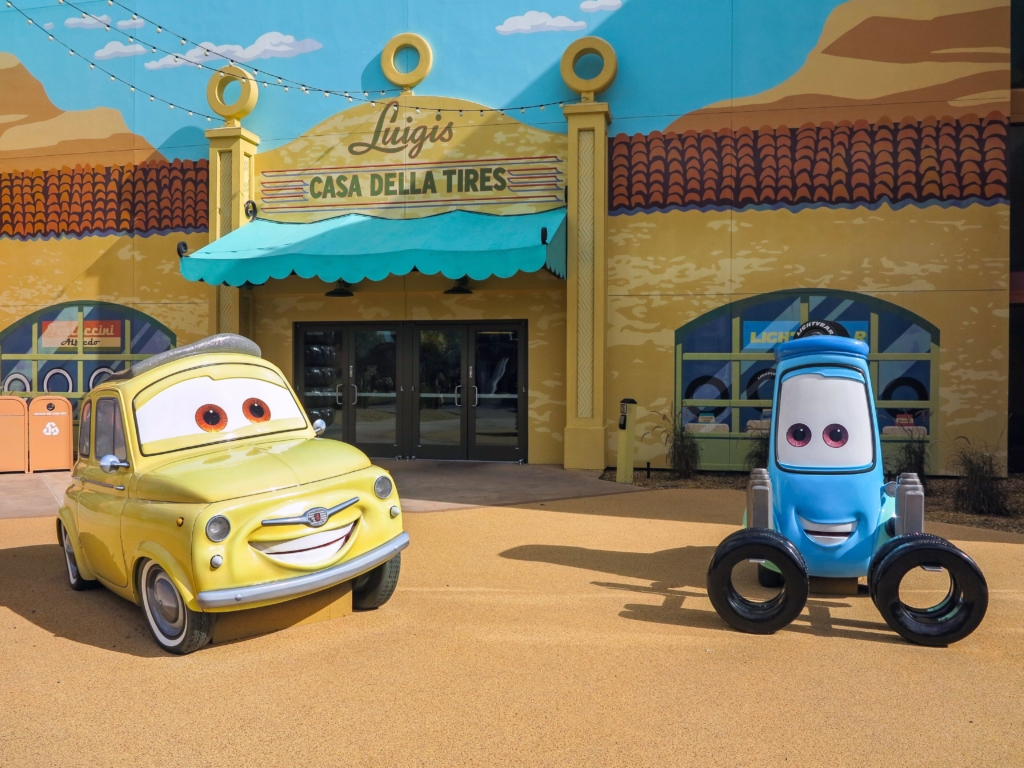
Crazy Disney Fan Theories That Will Make You Rethink Everything

Famous Cats in History

Actresses That Underwent Shocking Transformations For Movie Roles

More Brutally Honest Breakup Messages That Will Give You Love Trauma
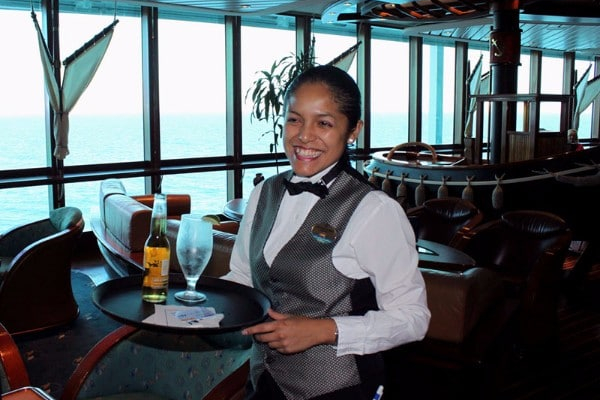
Rocking the Boat: Cruise Ship Staff & Their Secrets

Must See Camping Photos That’ll Make Your Day!

Vacation Photos Gone Horribly Wrong Part 2
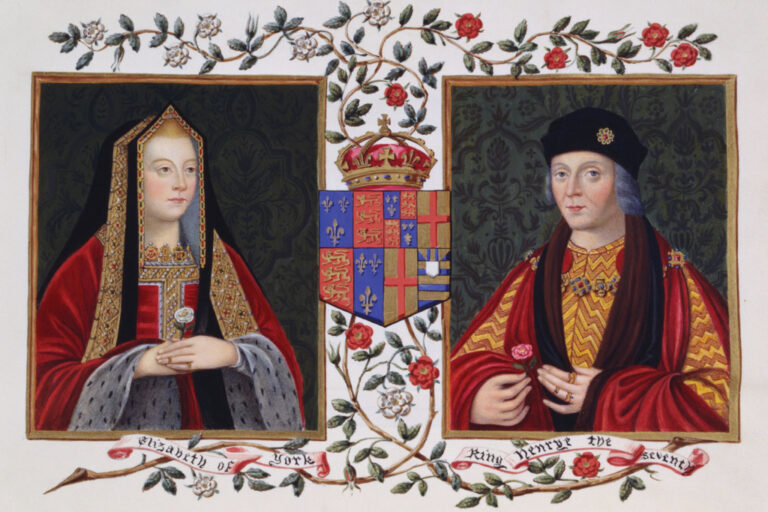
Elizabeth of York: The Original Sansa Stark
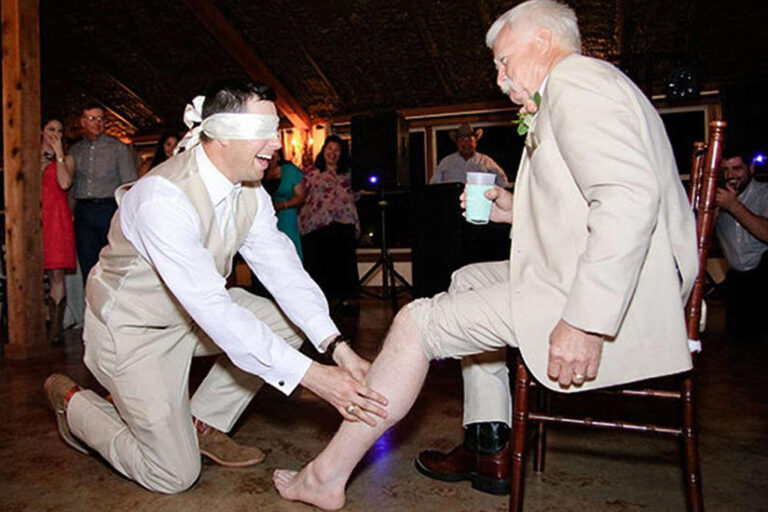
The Funniest Wedding Day Photo Fails Ever

